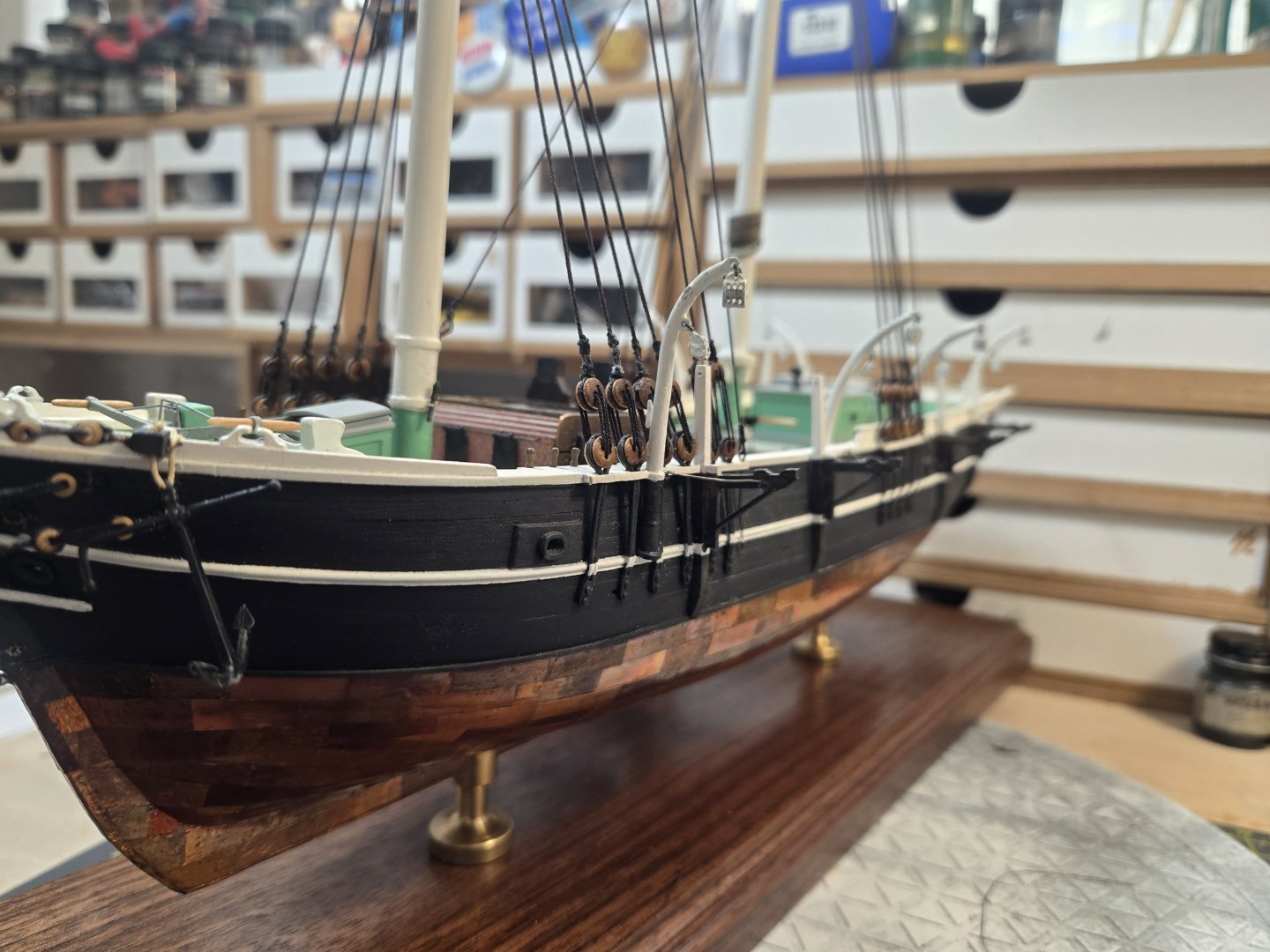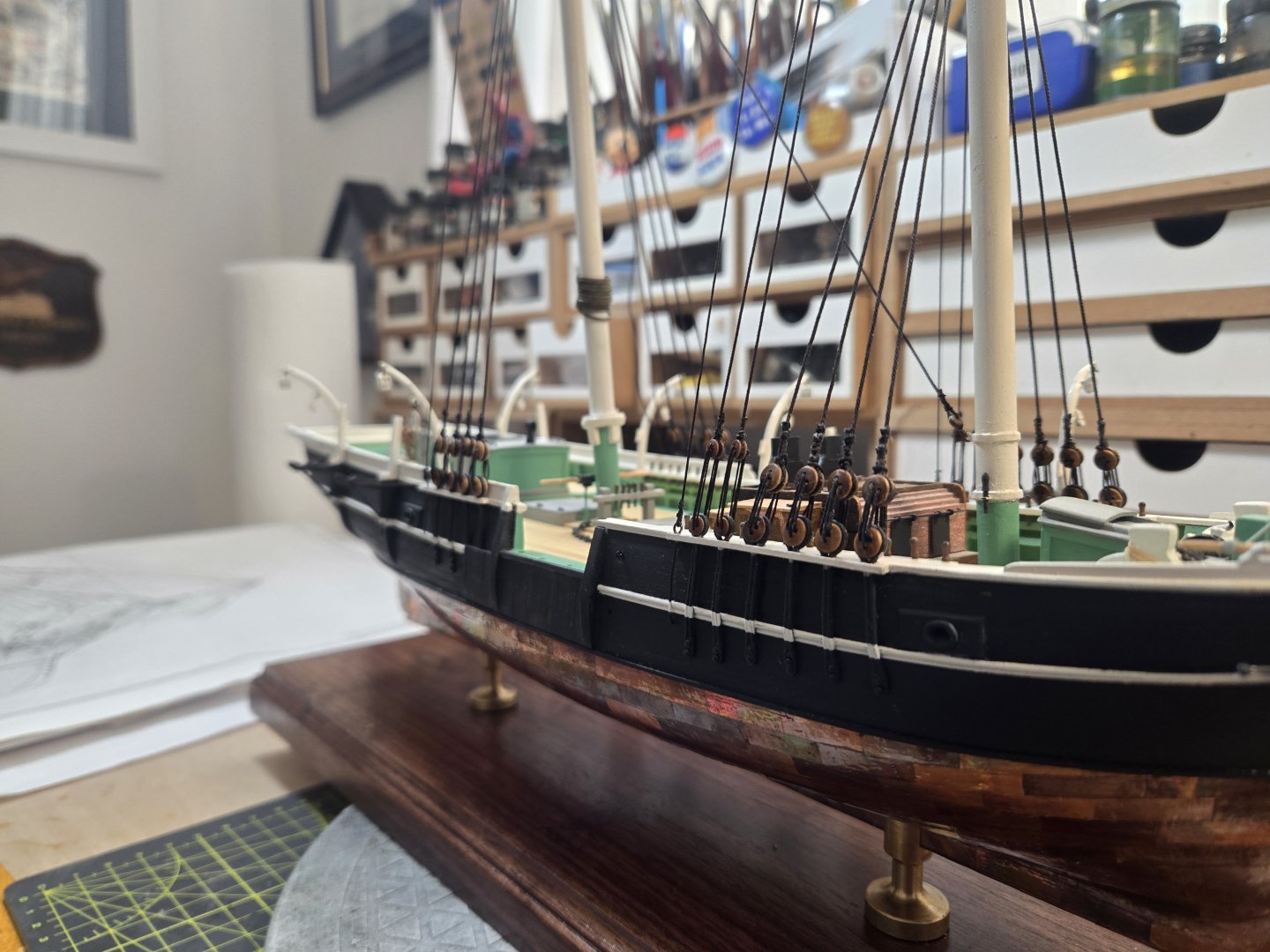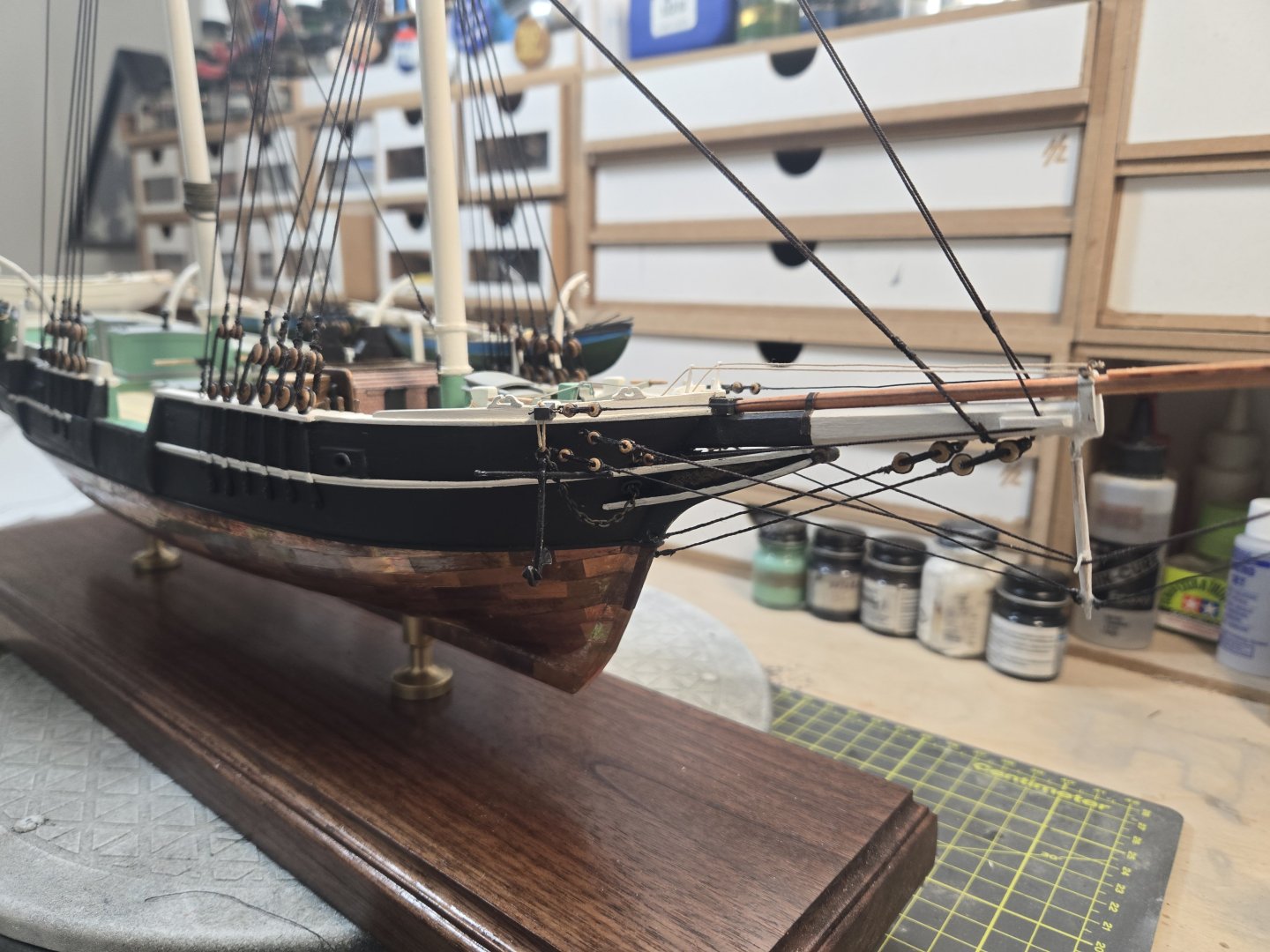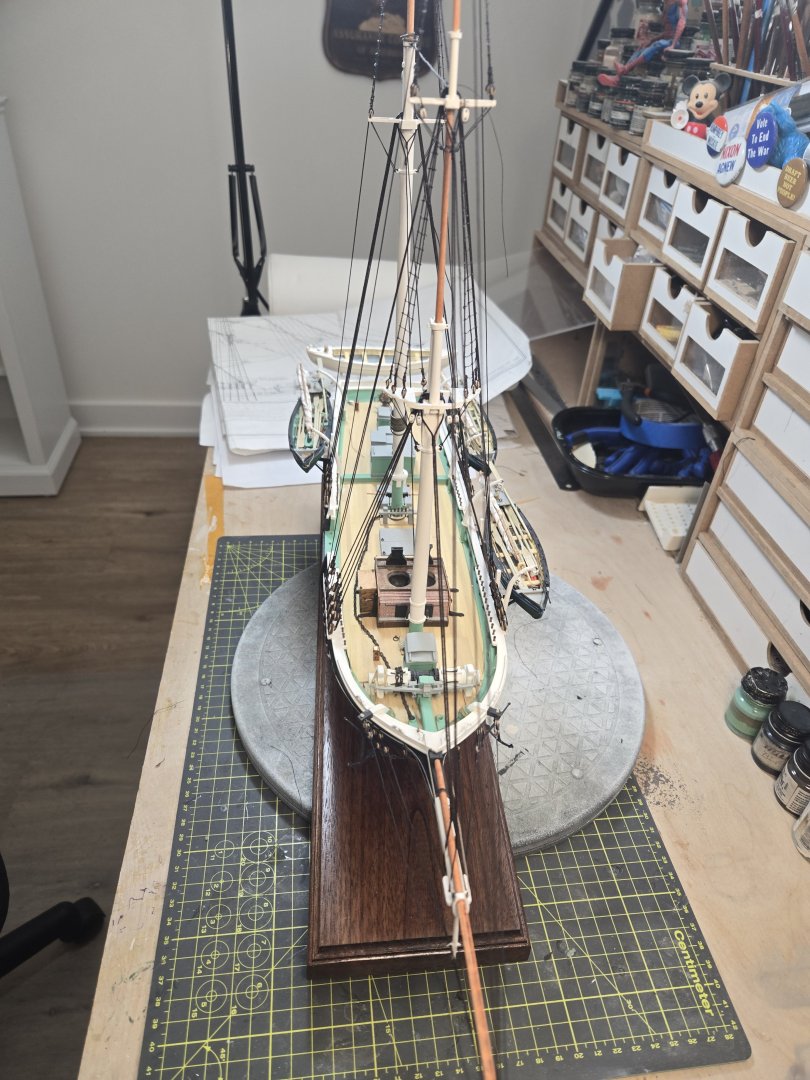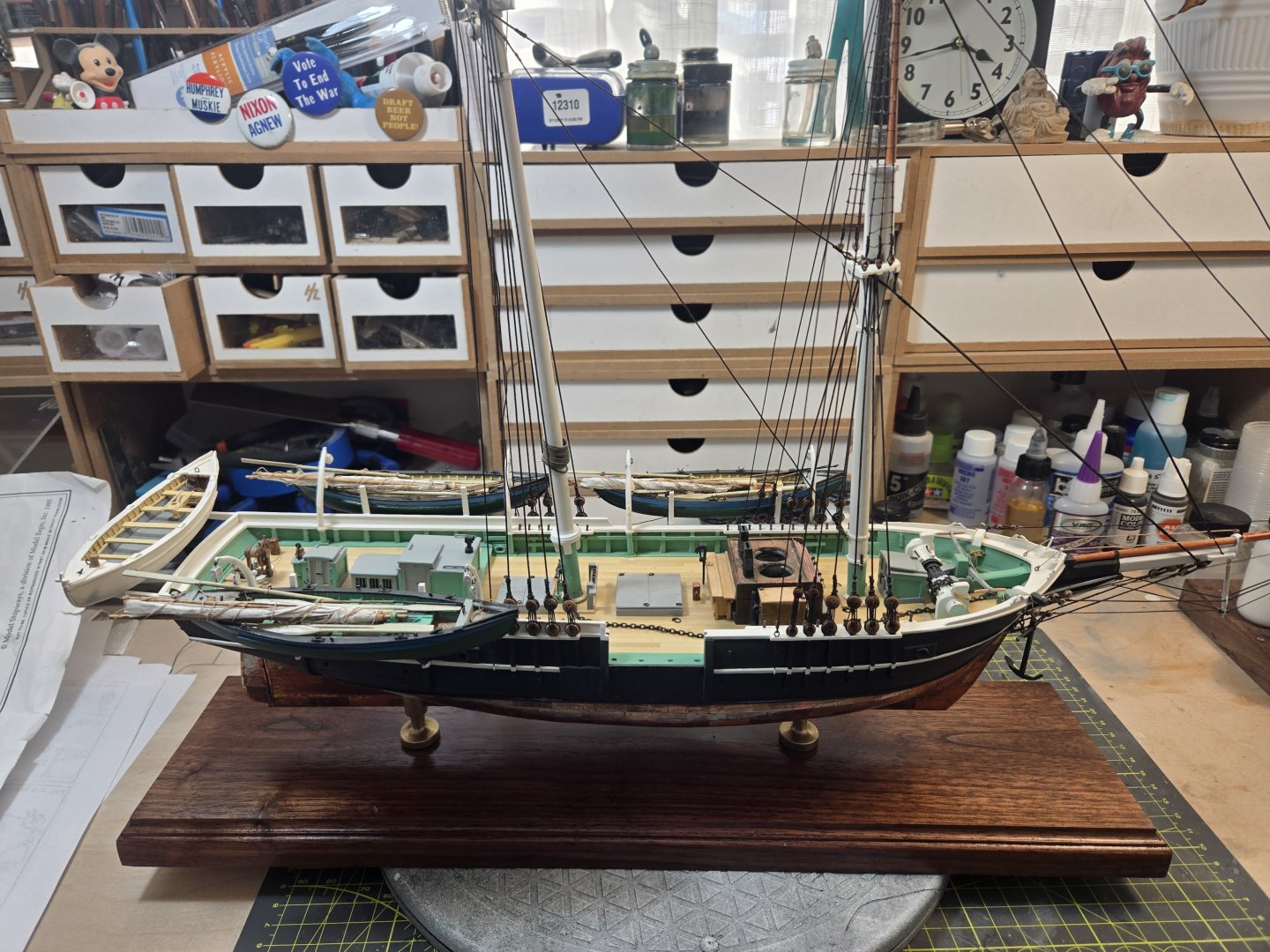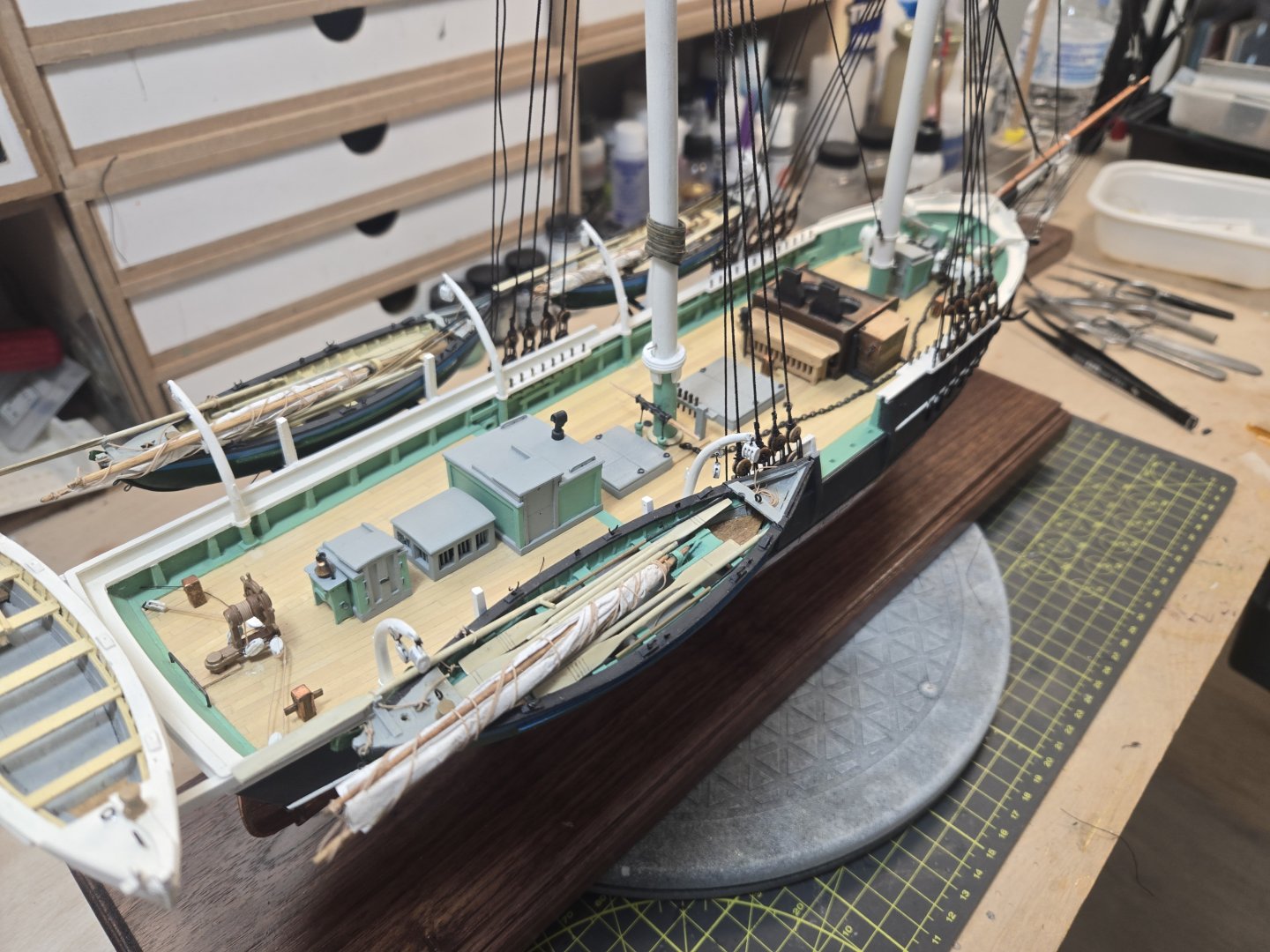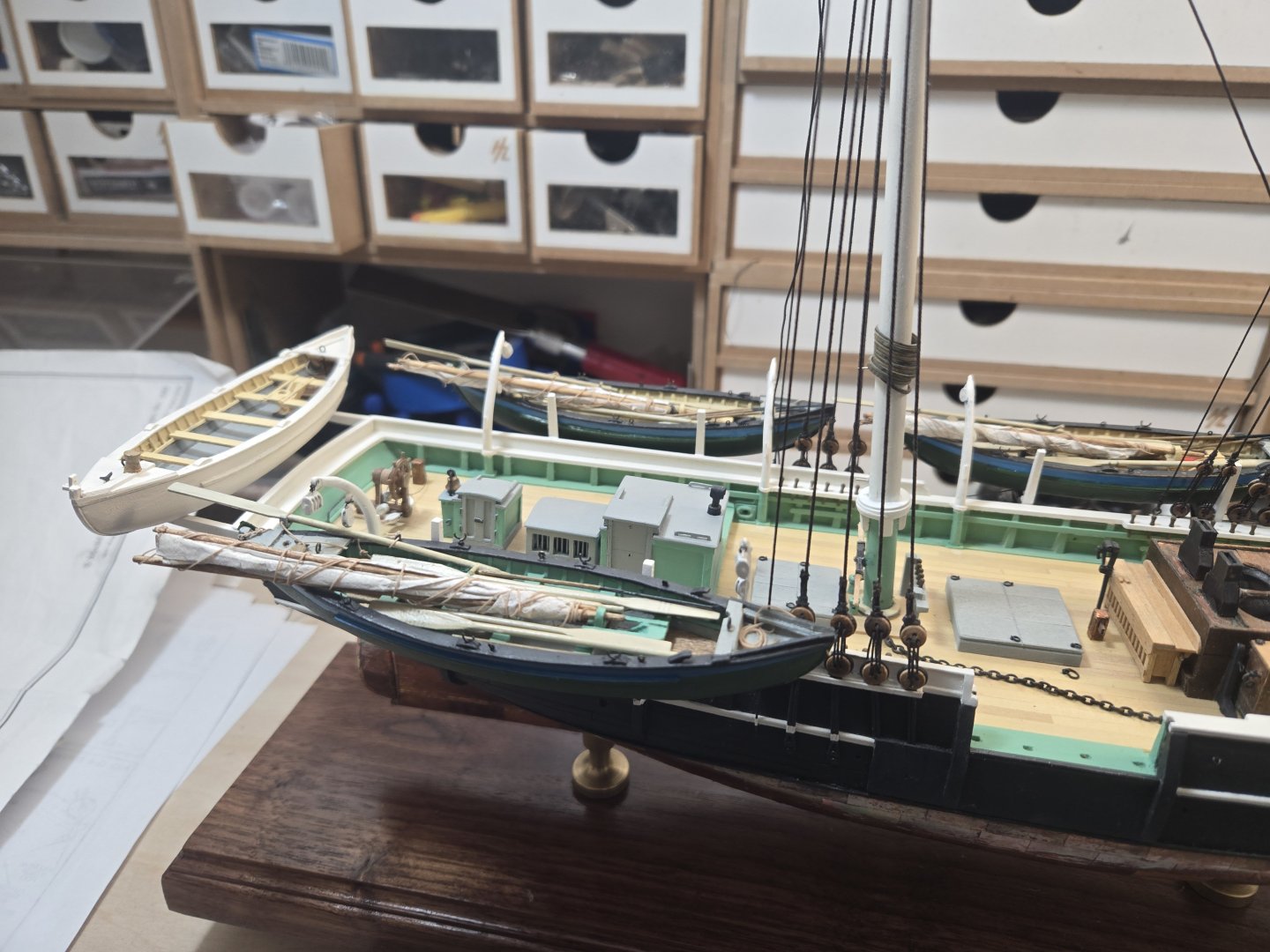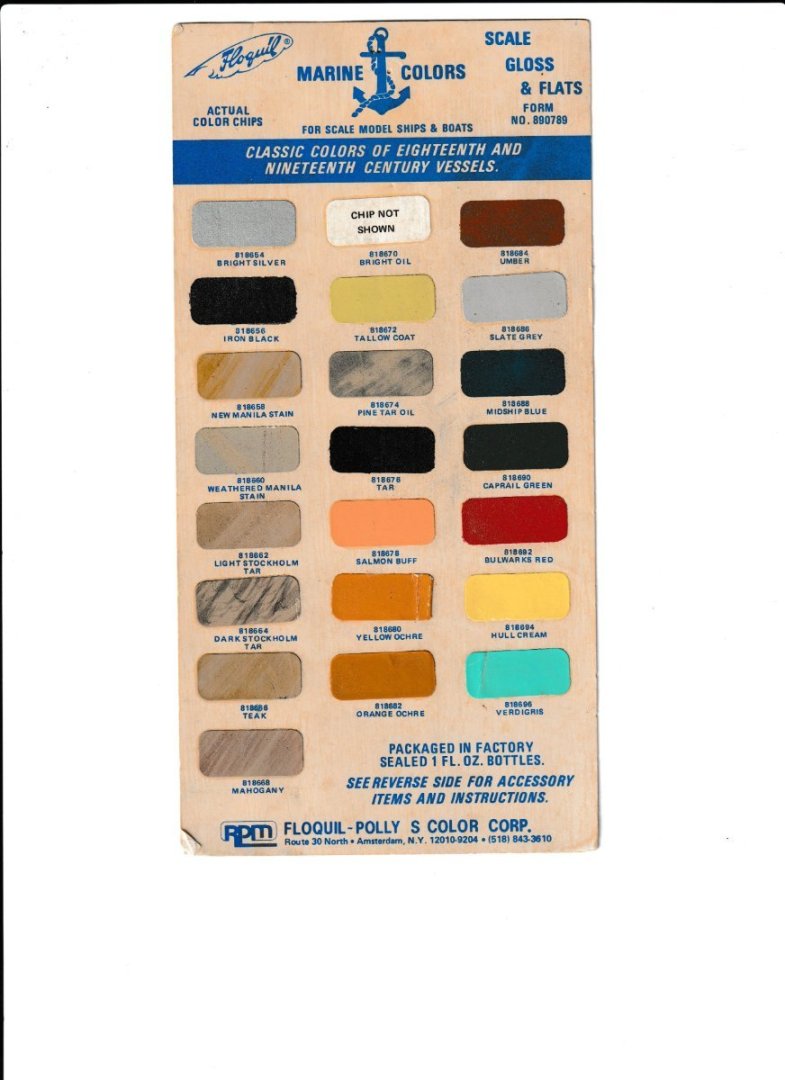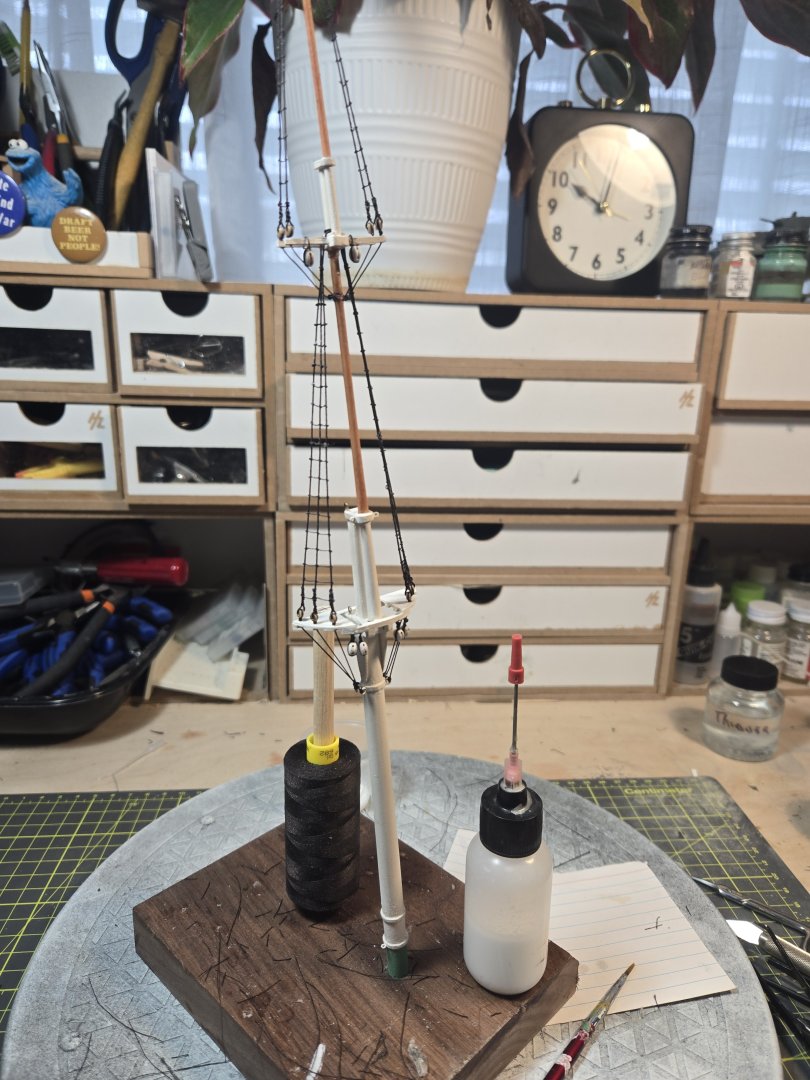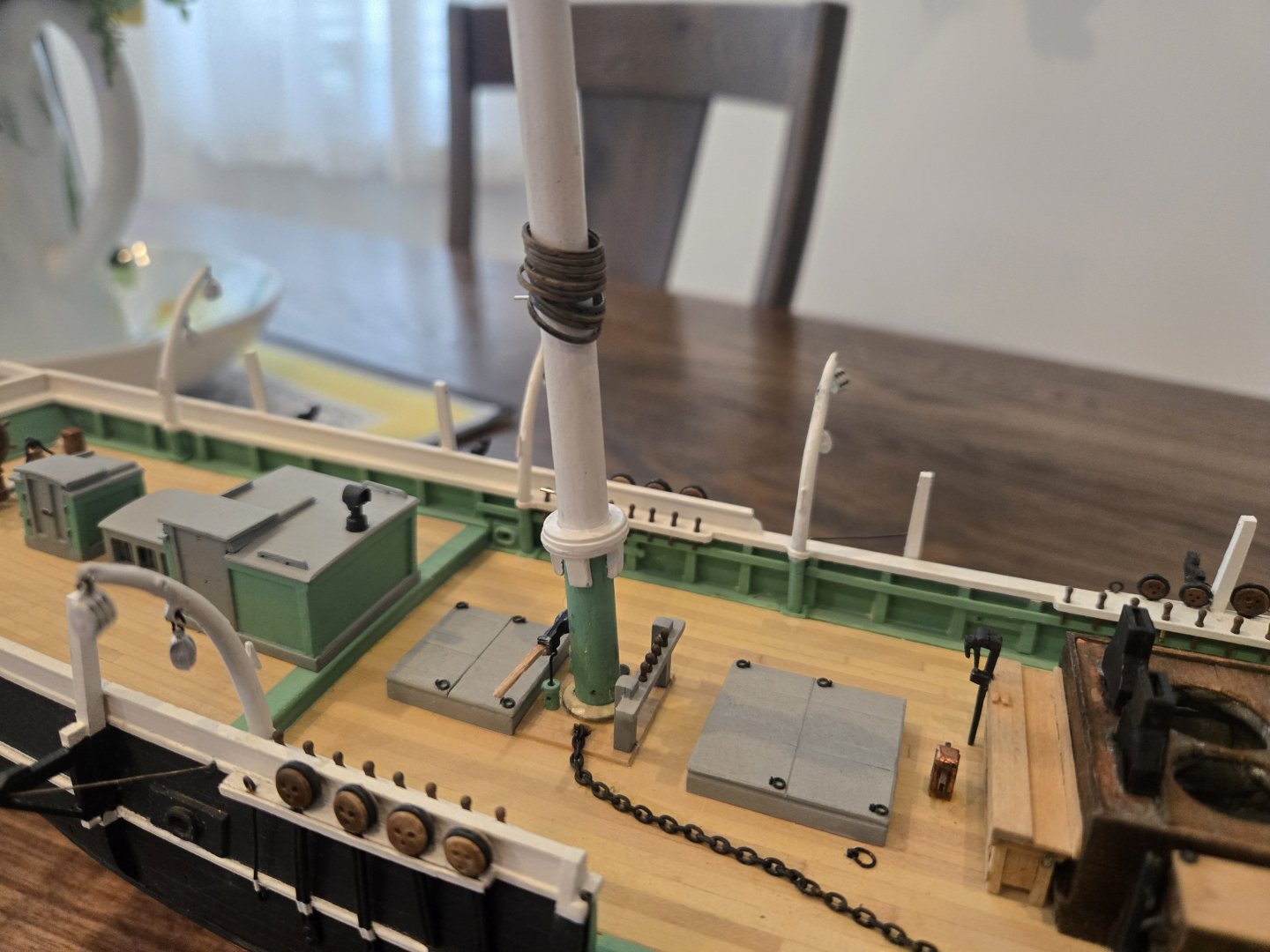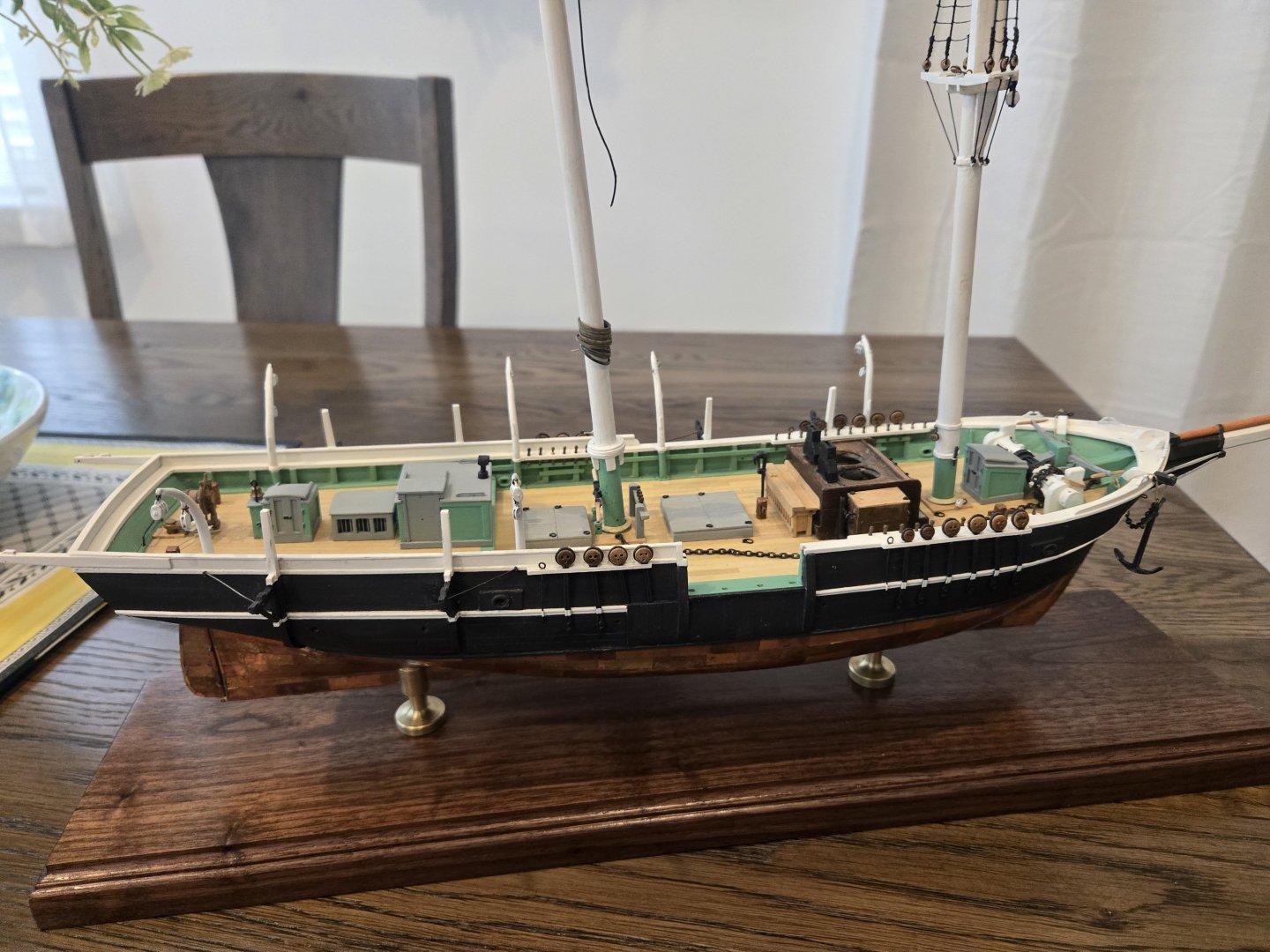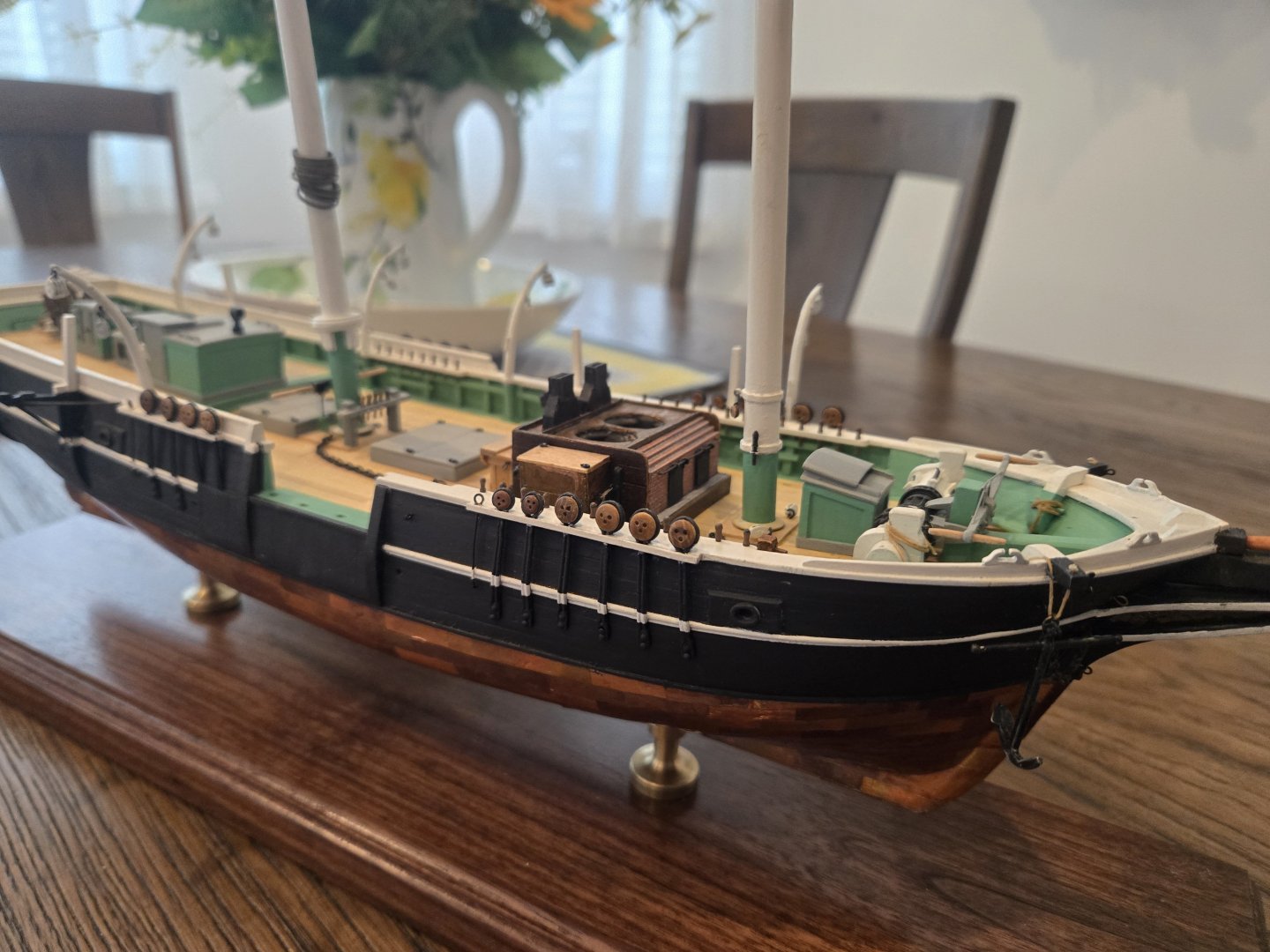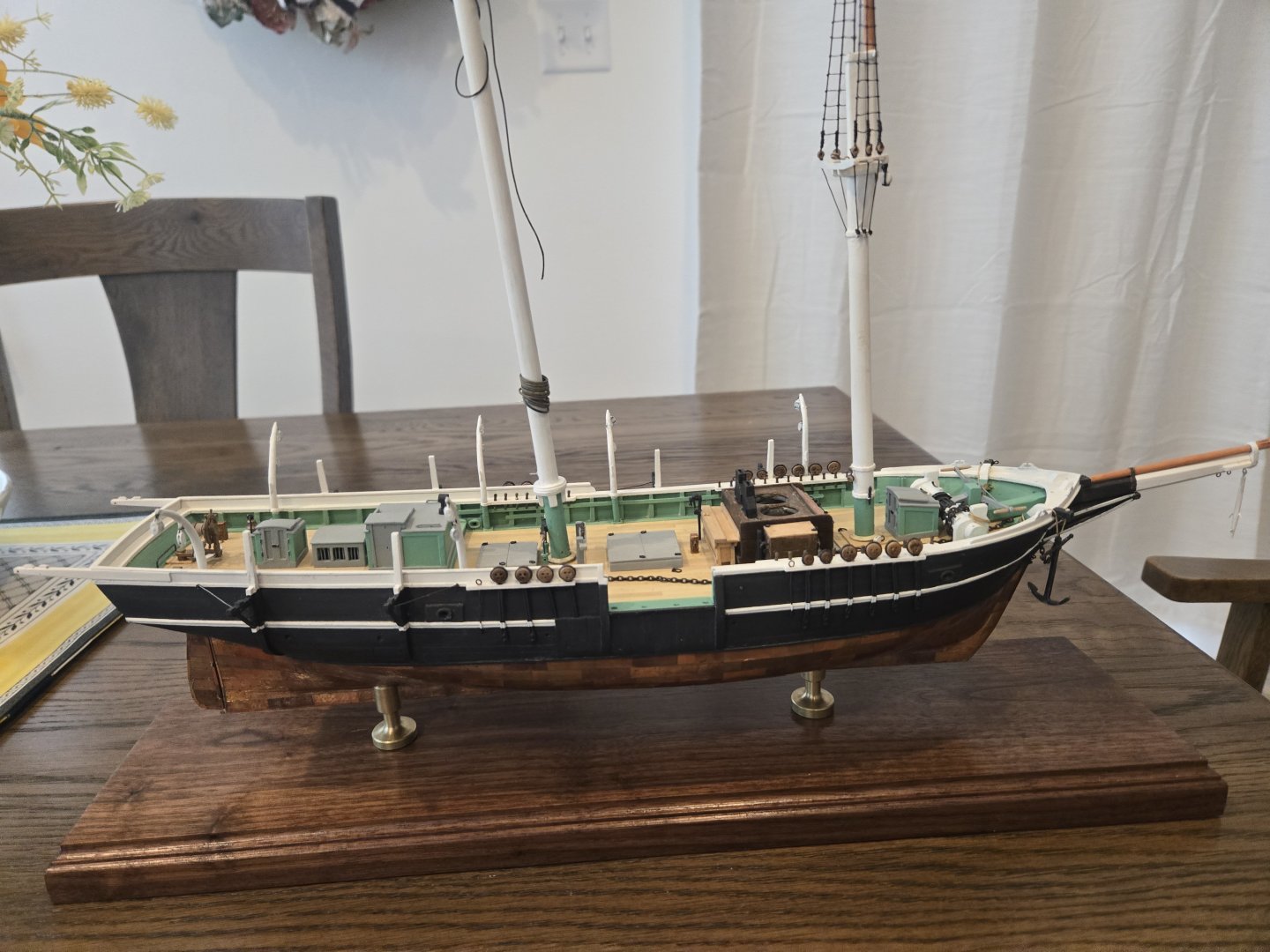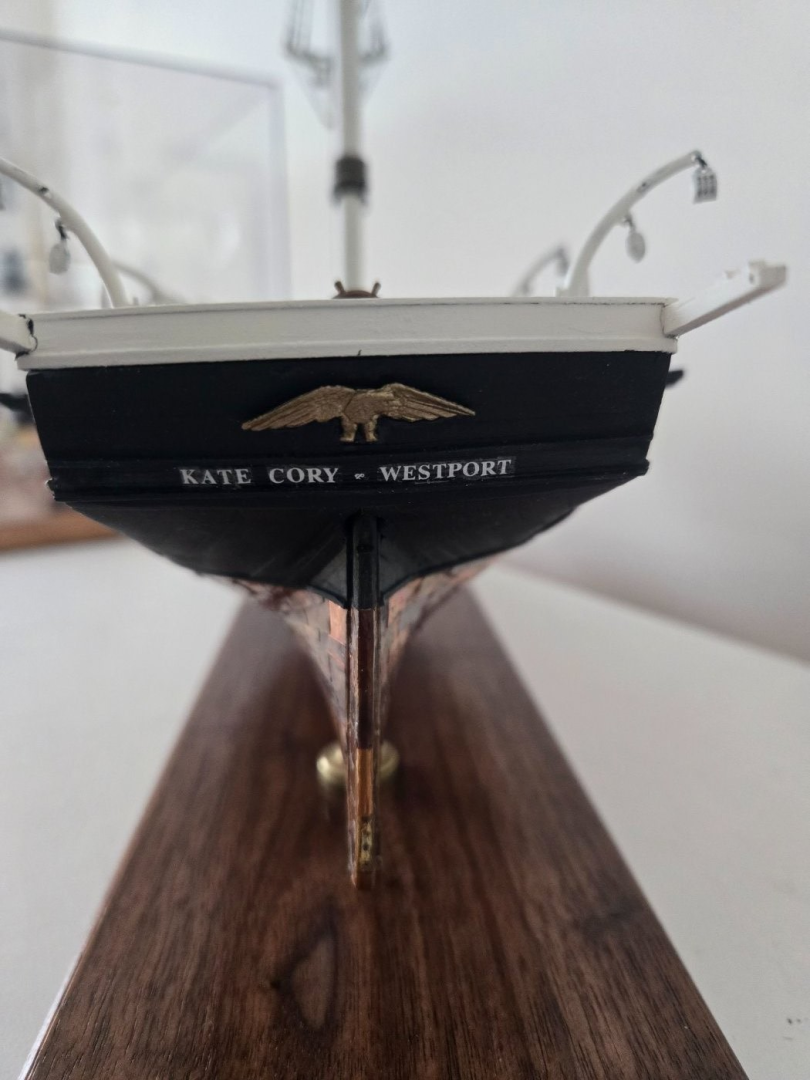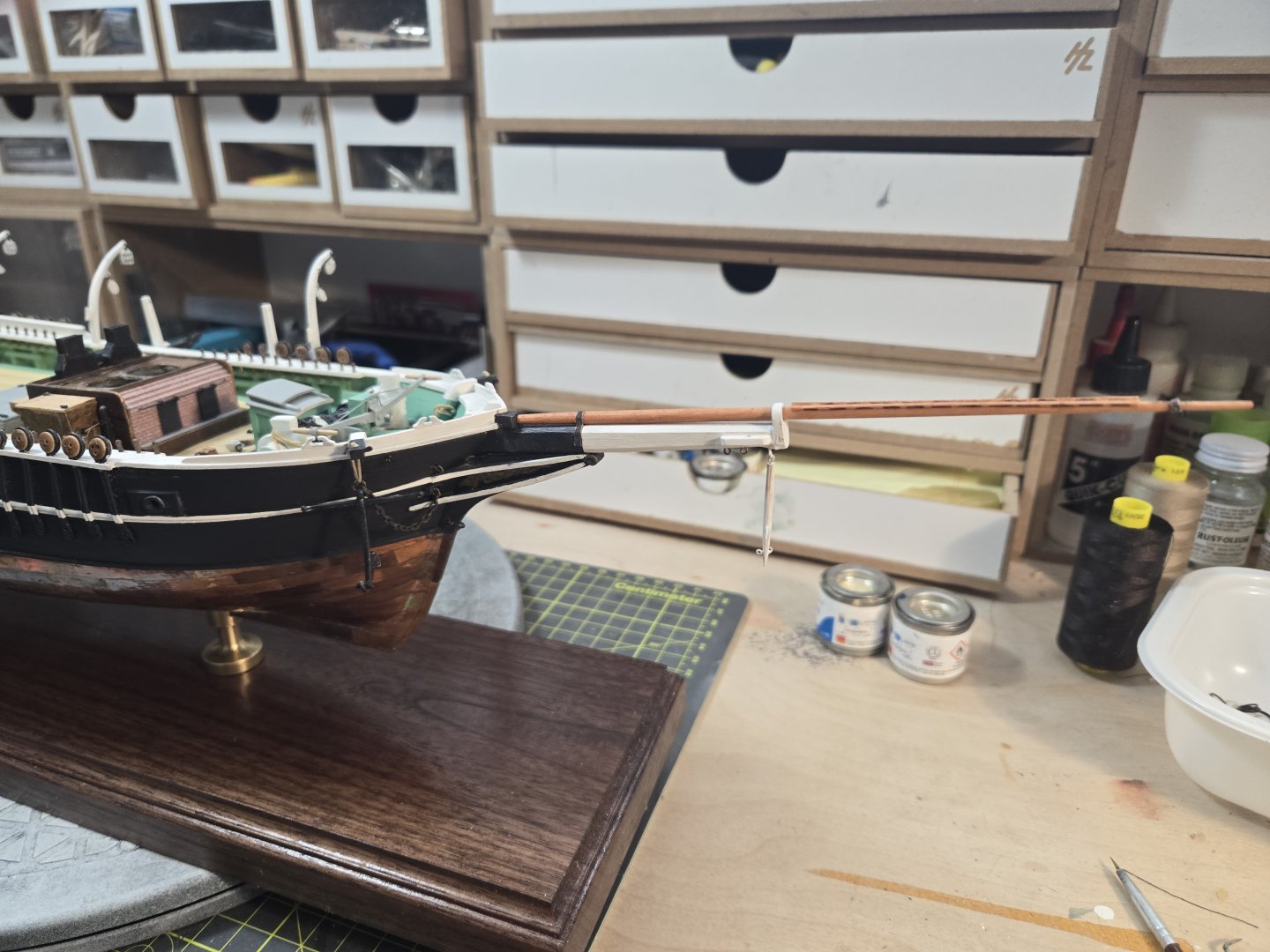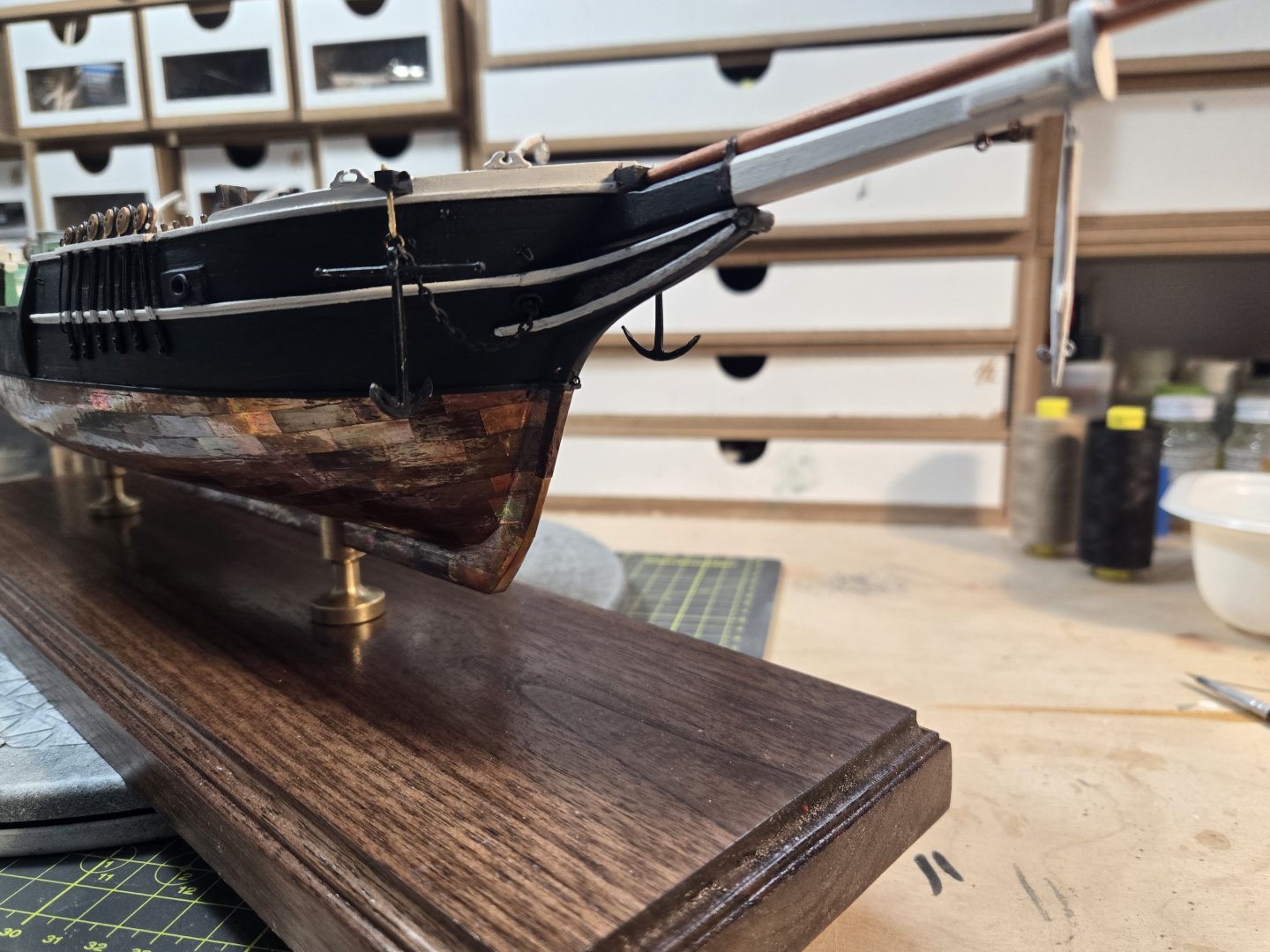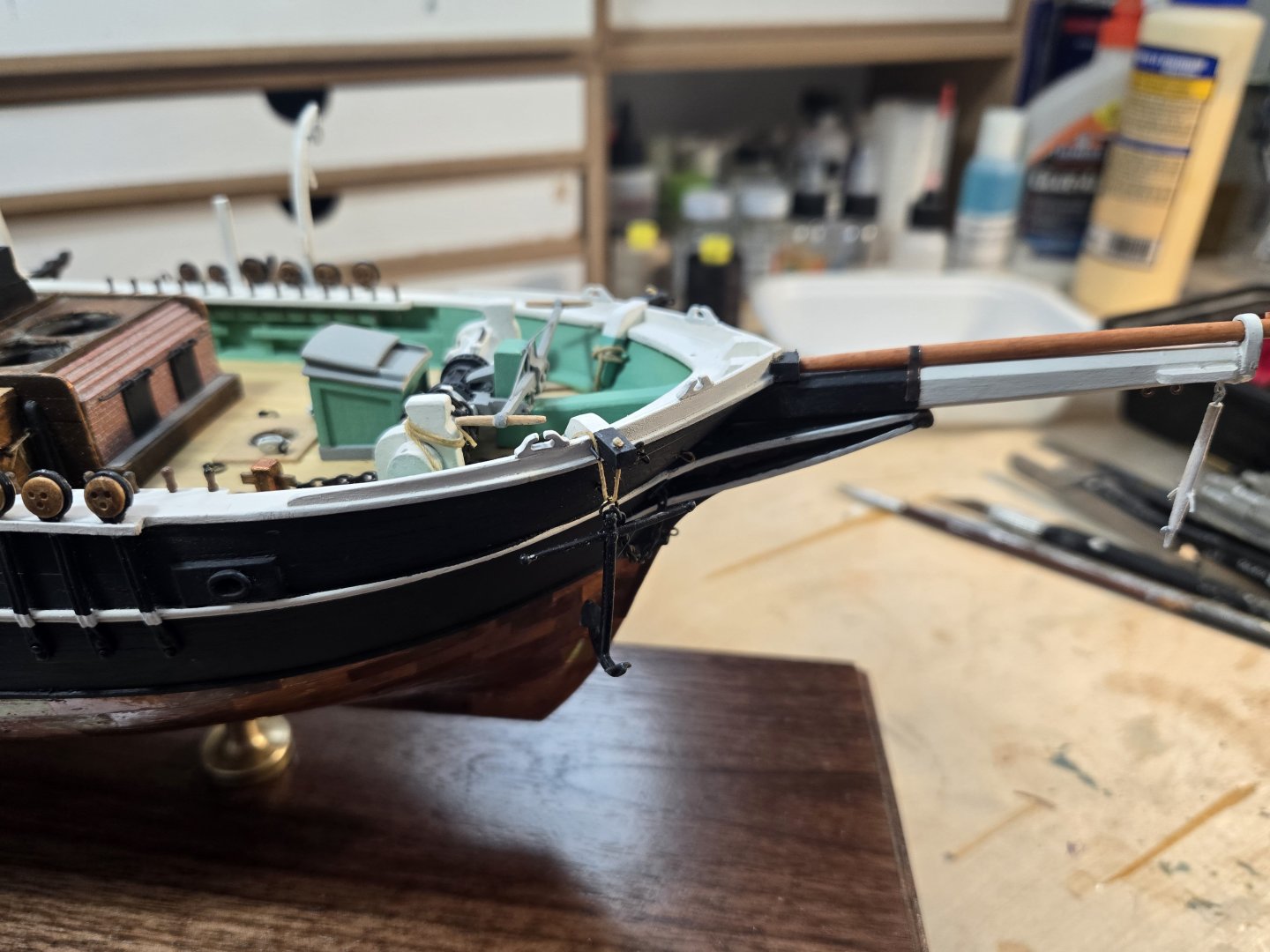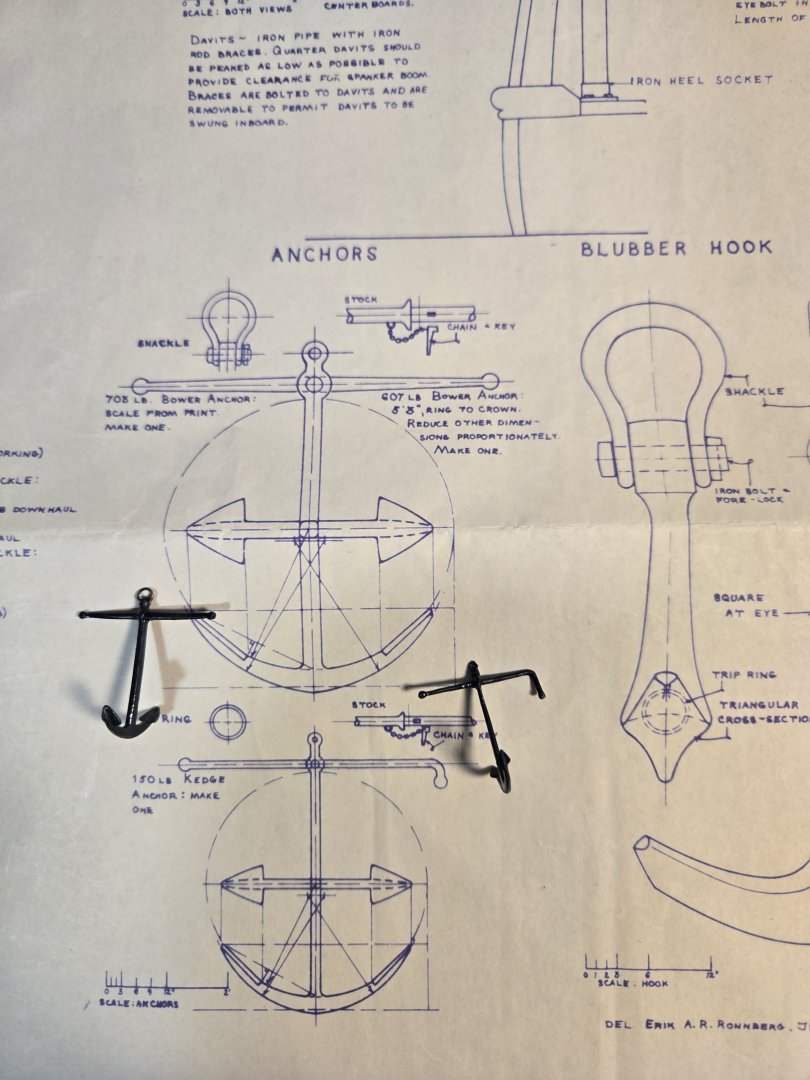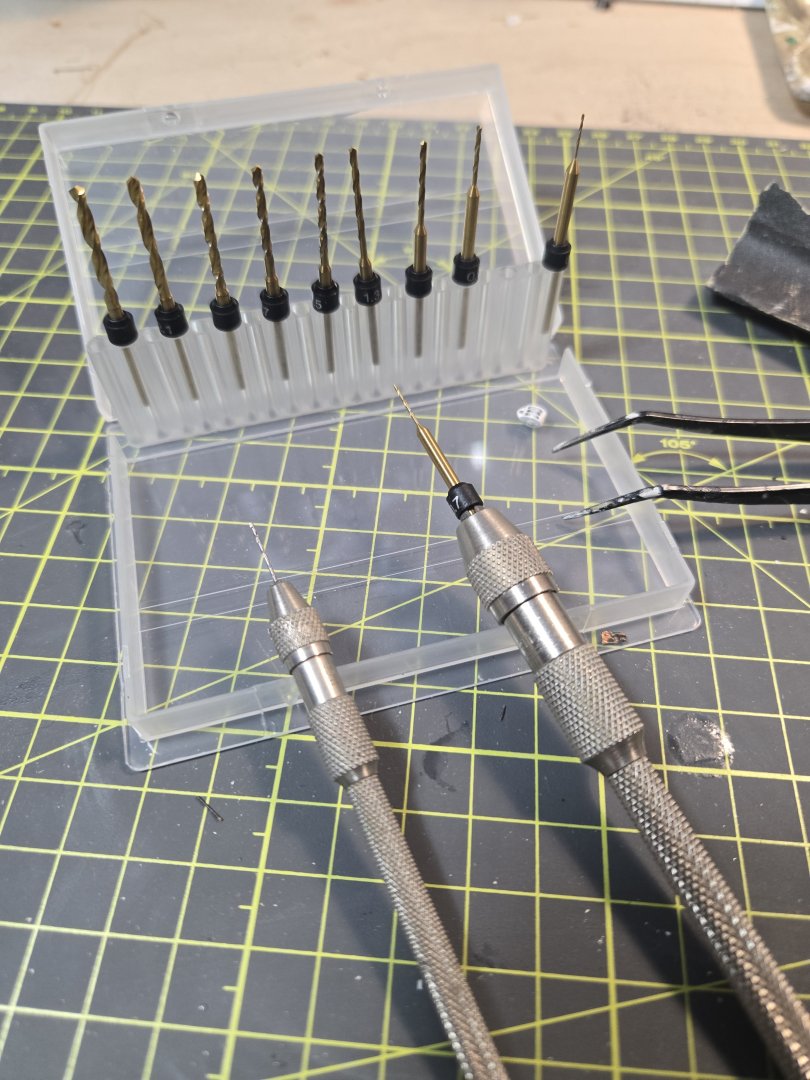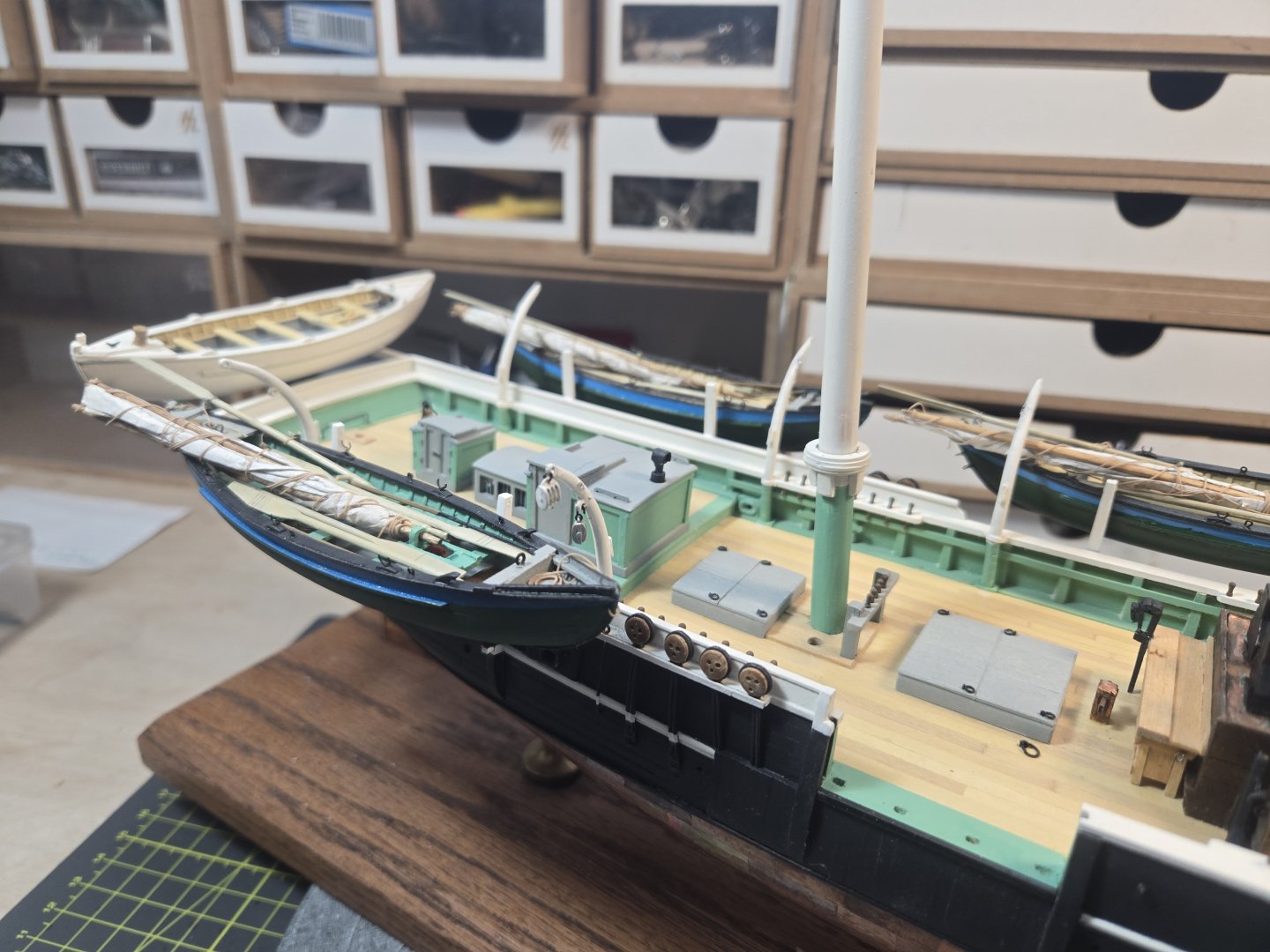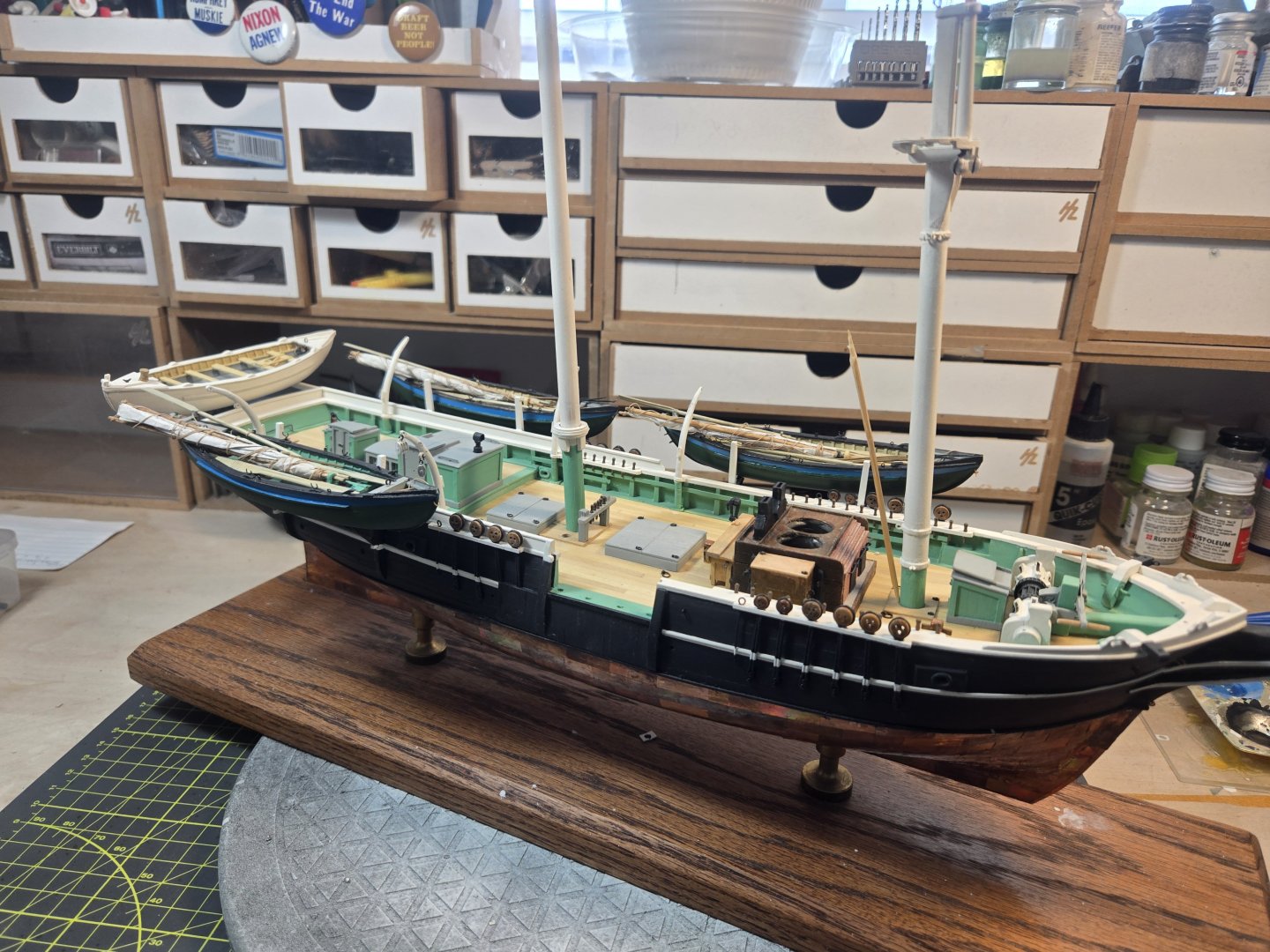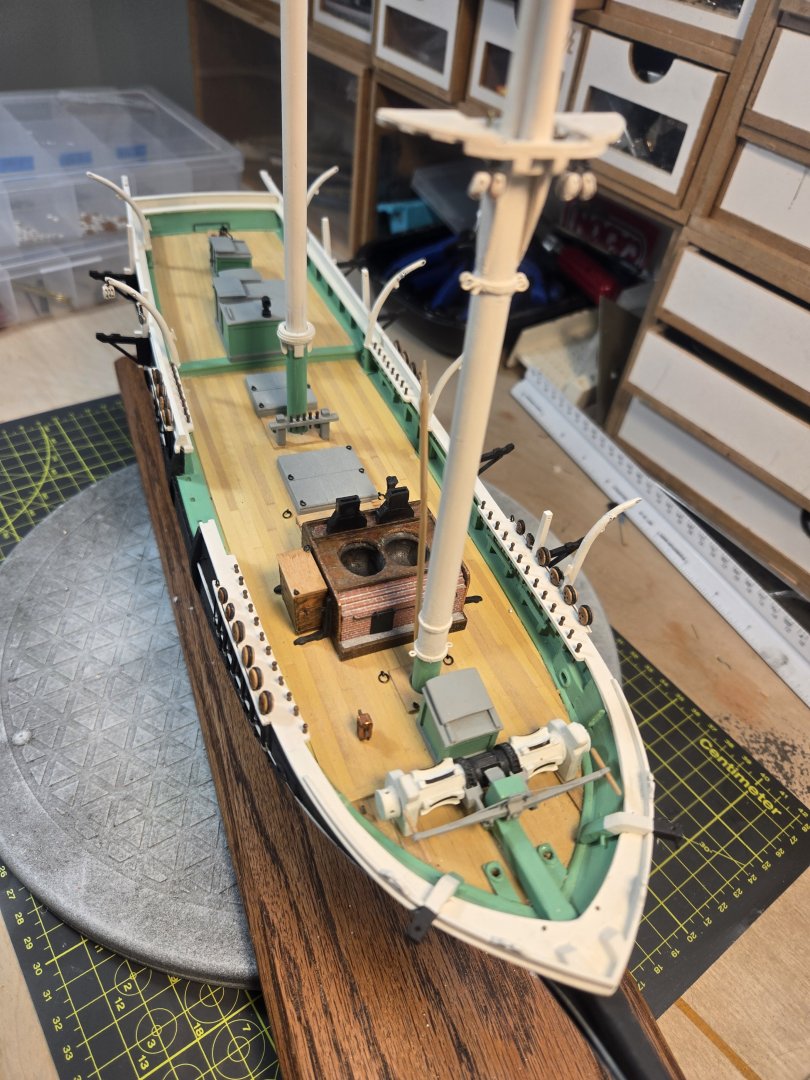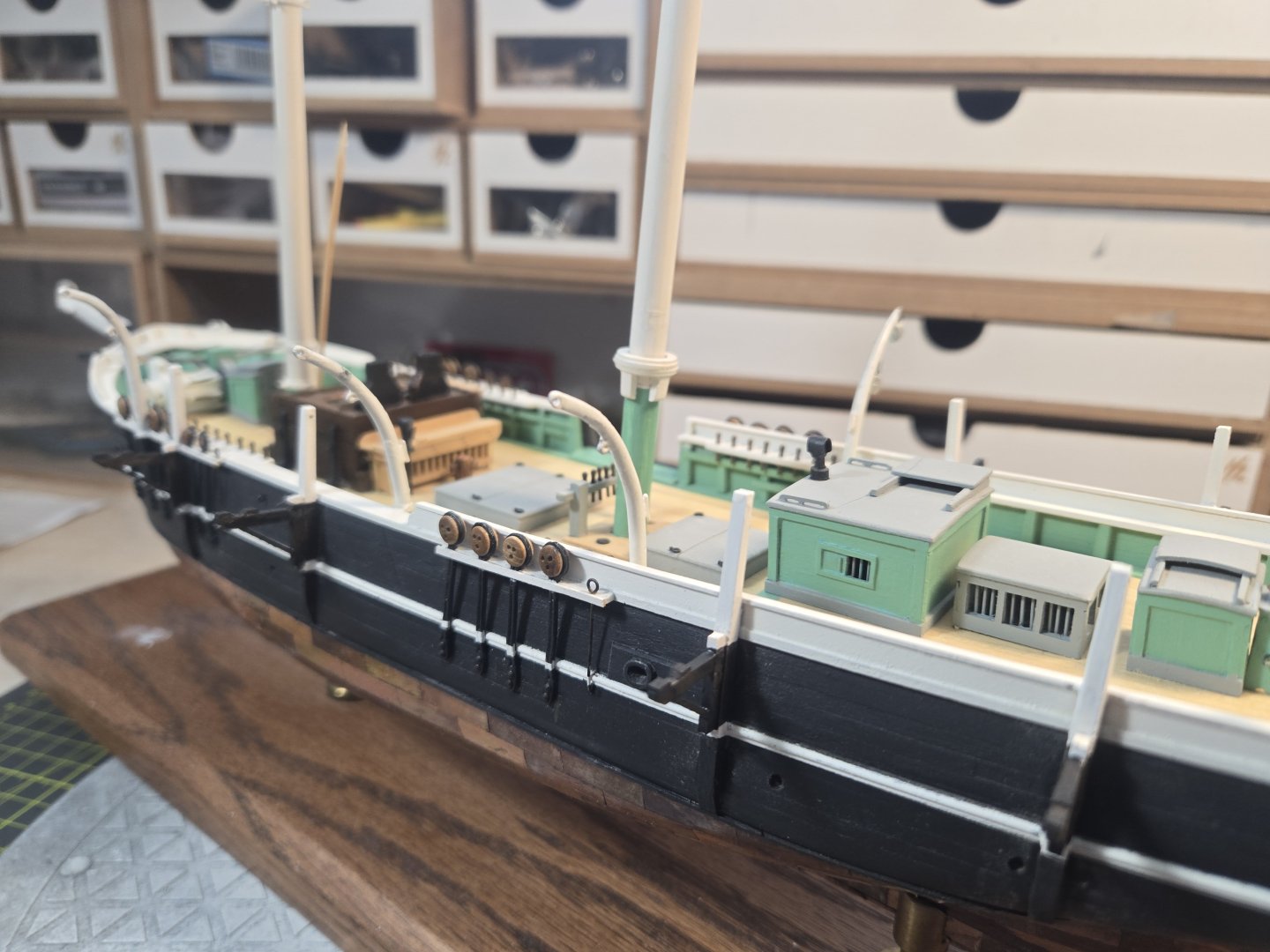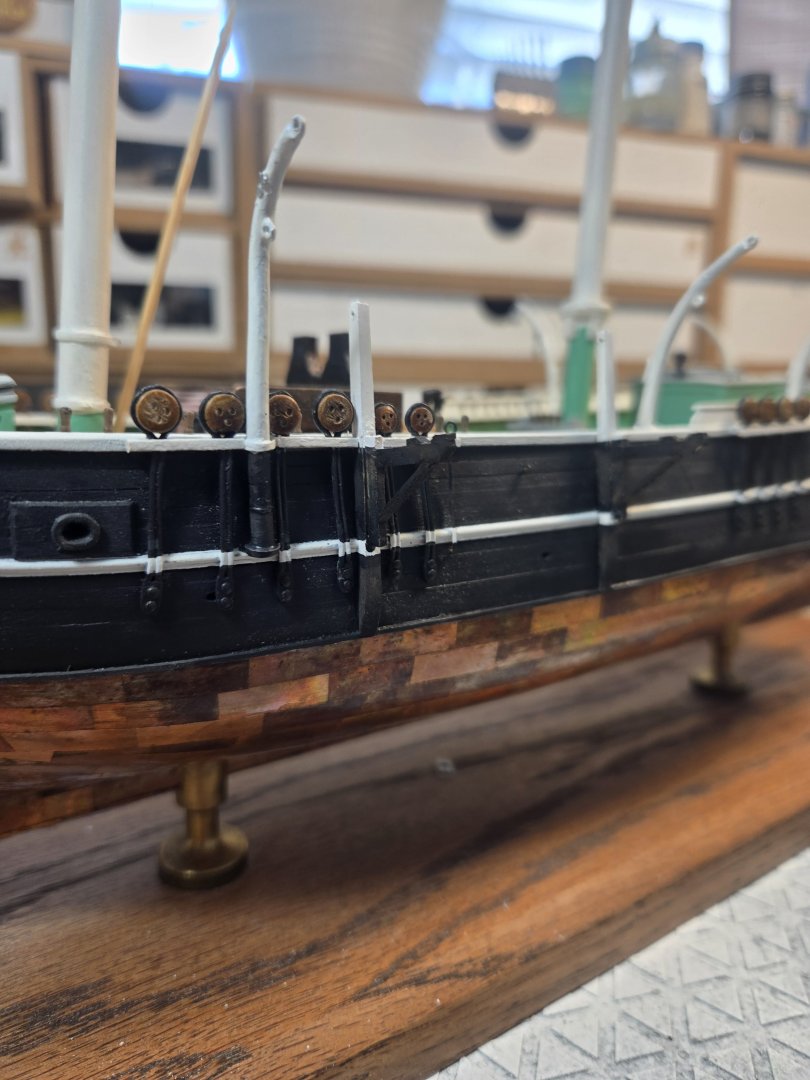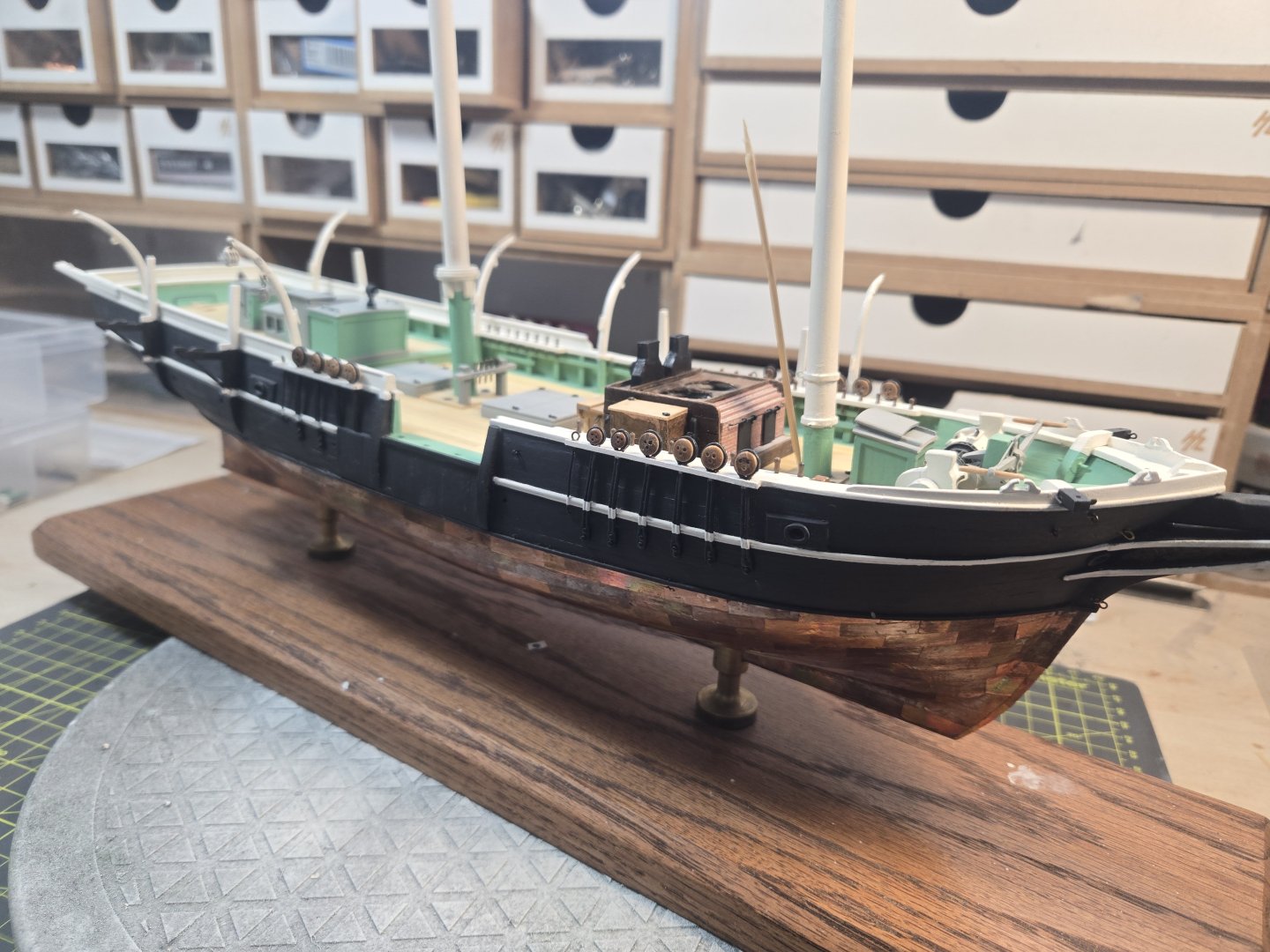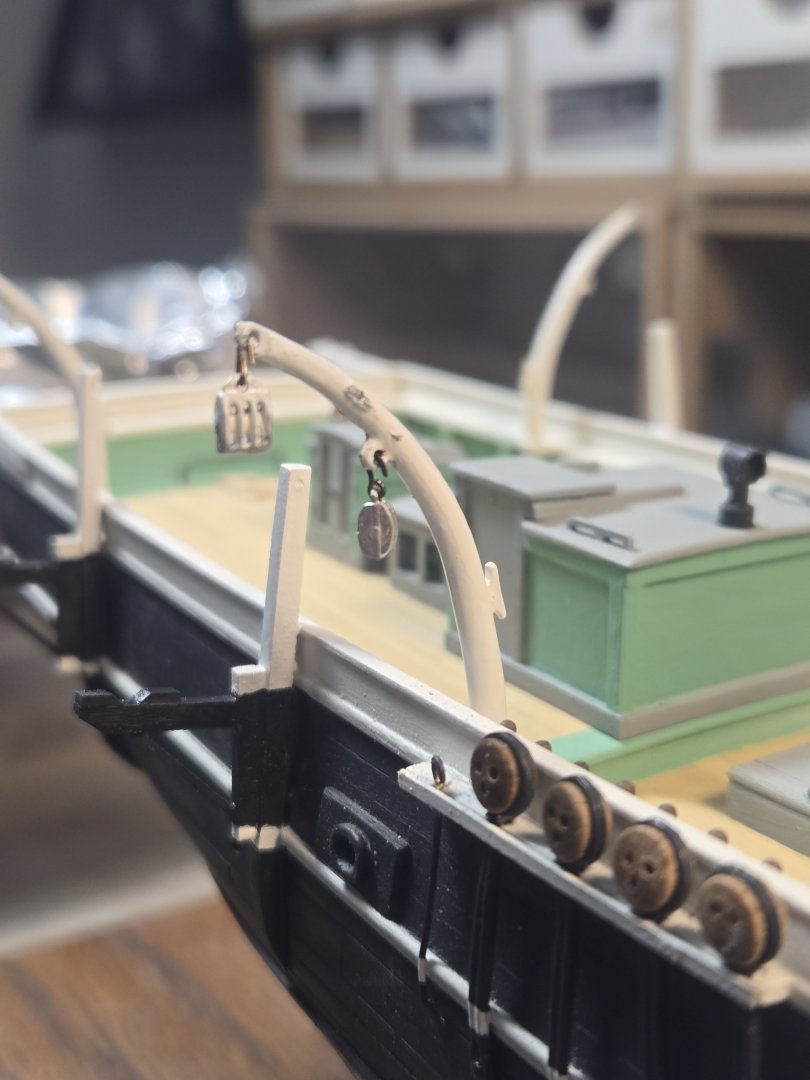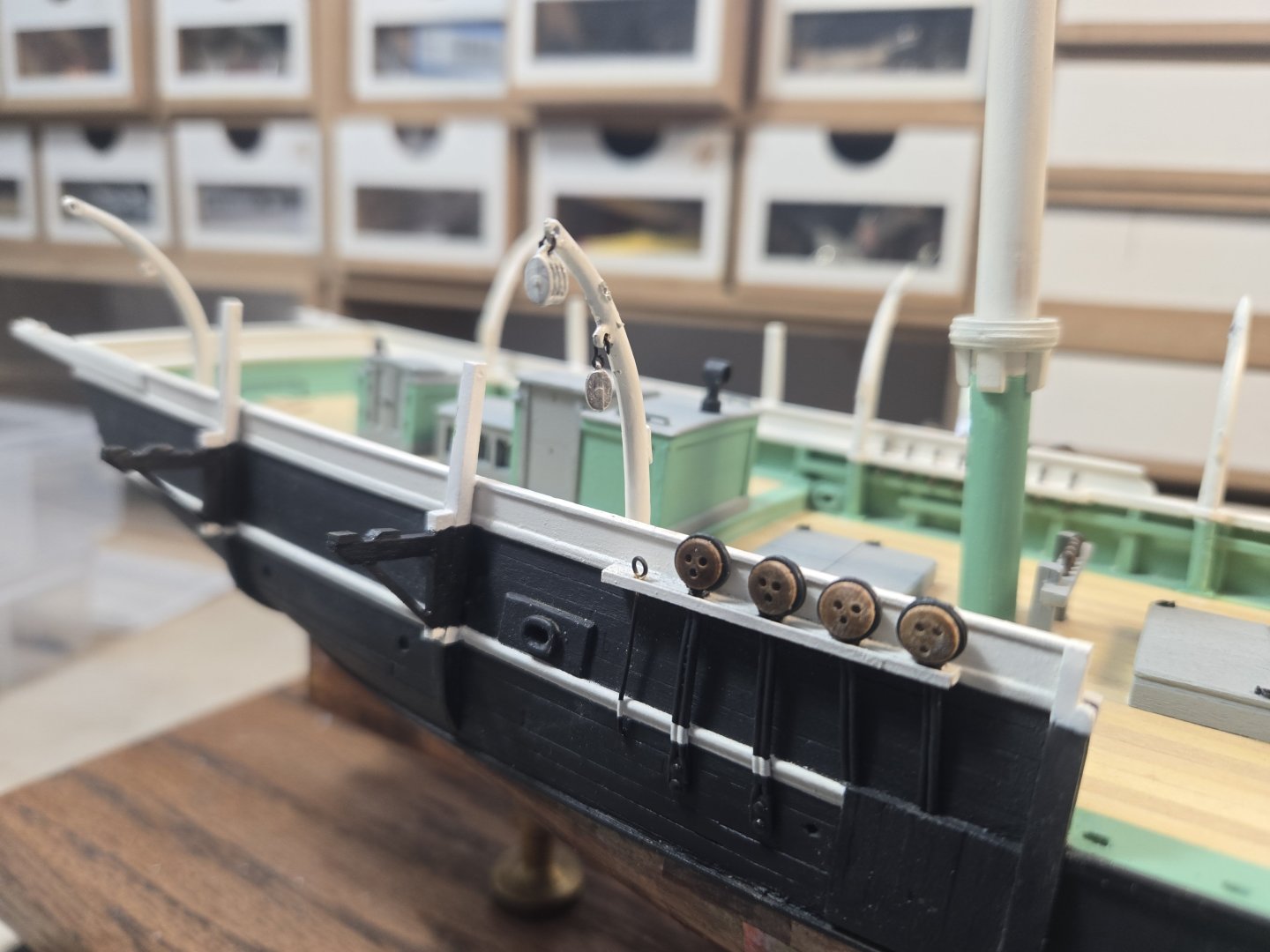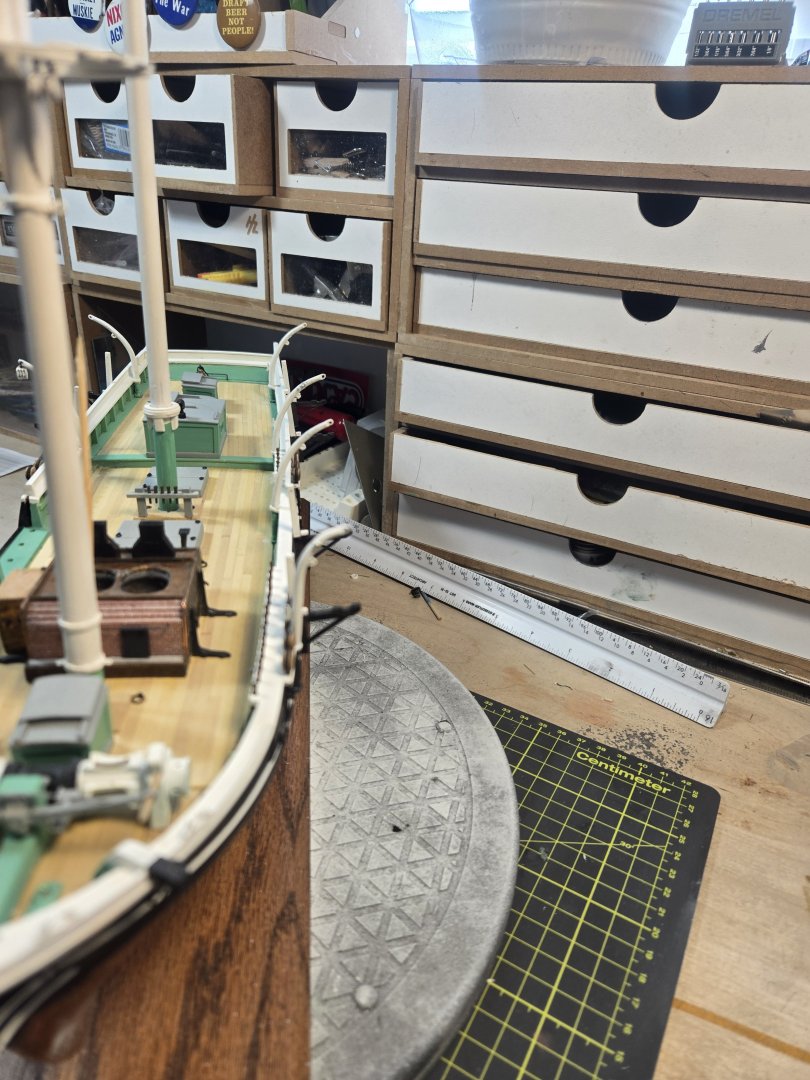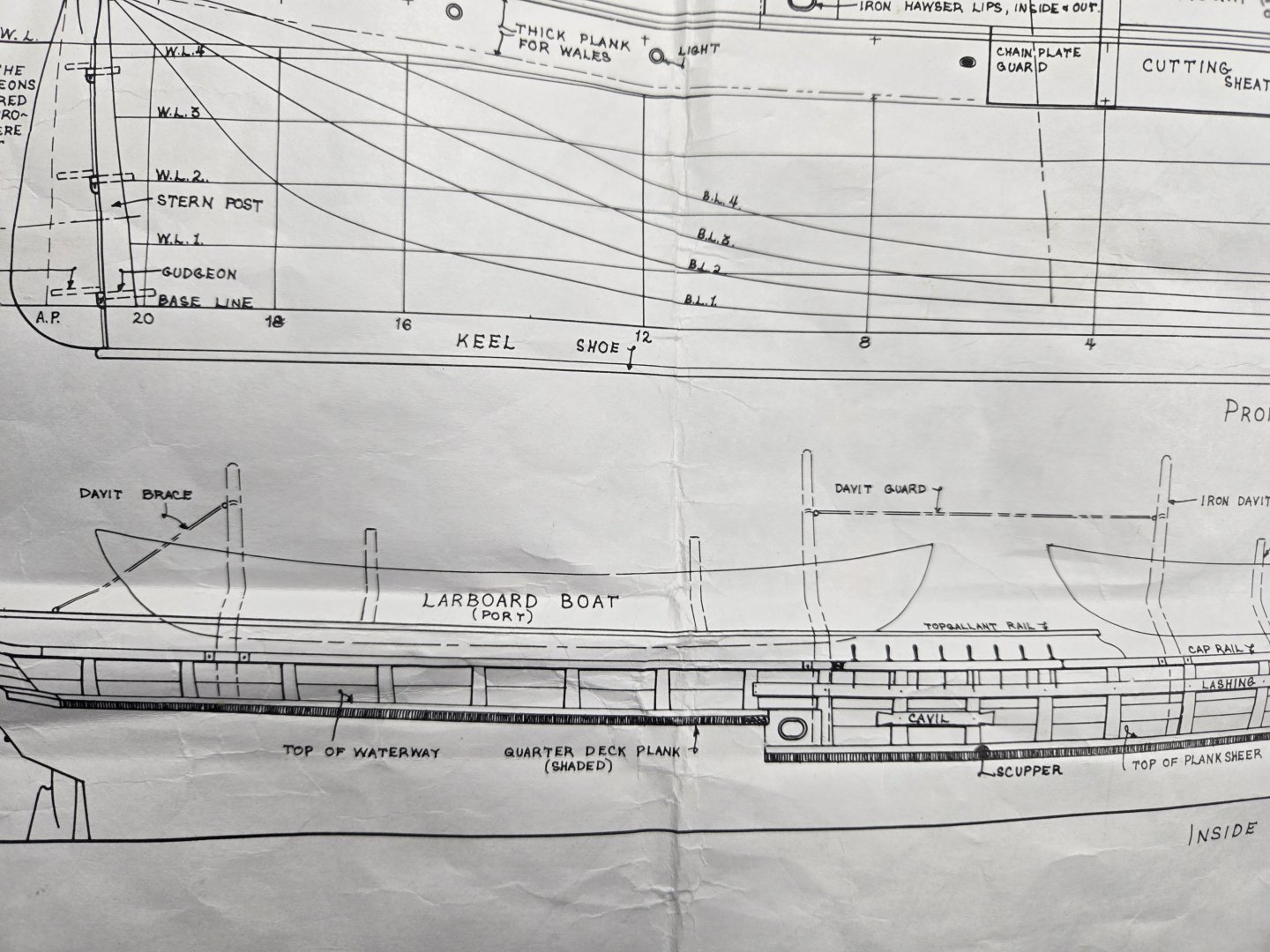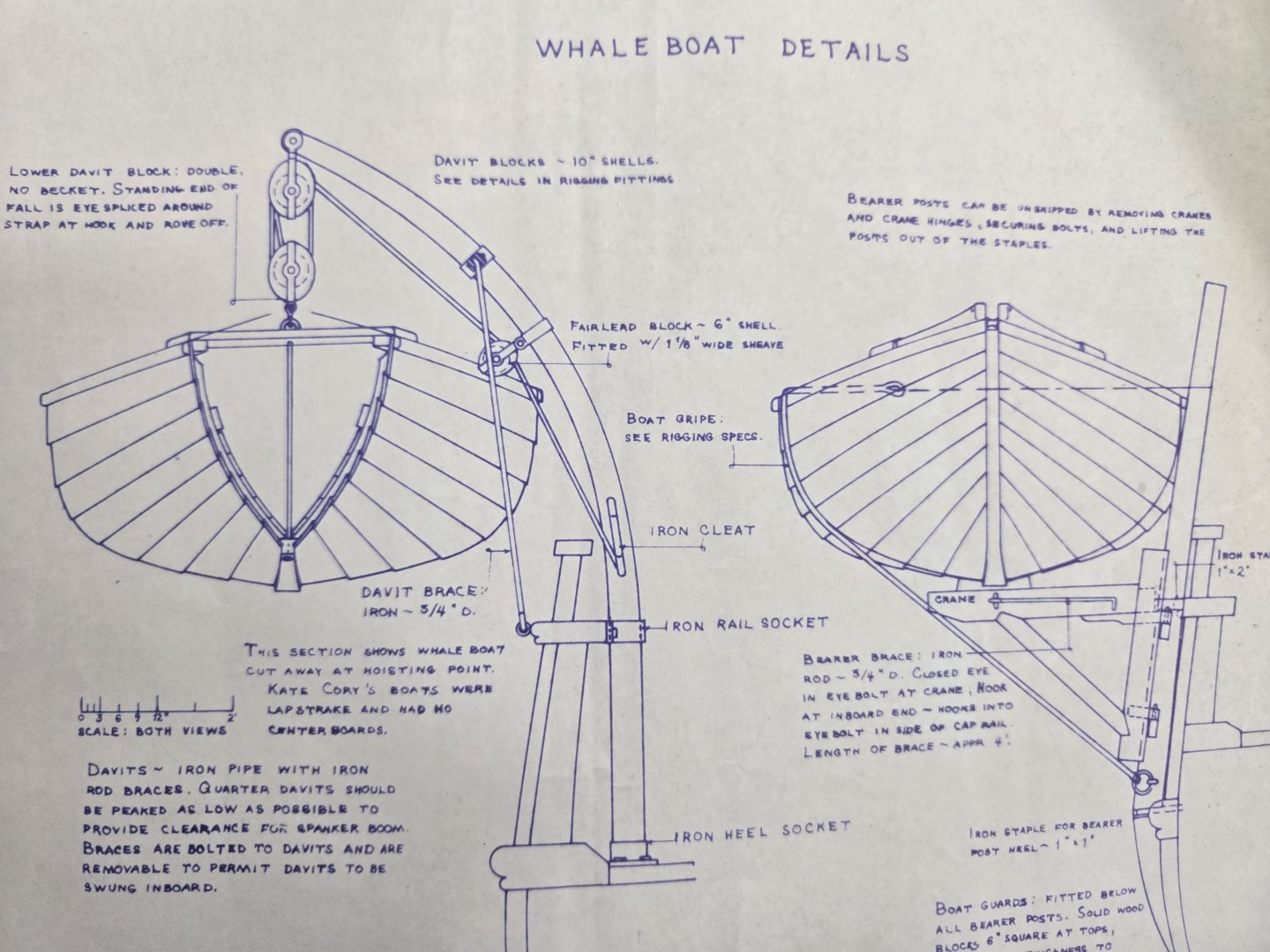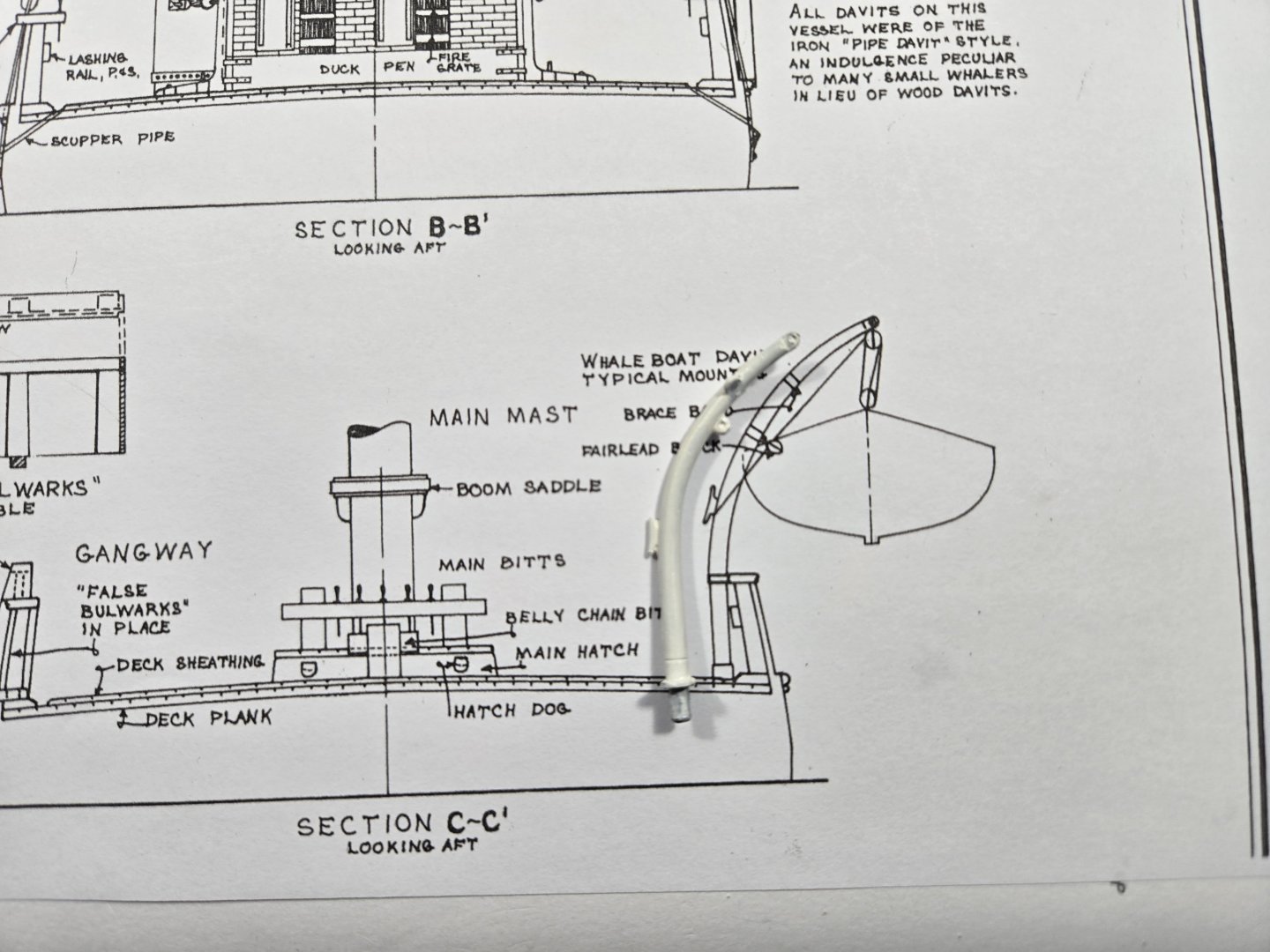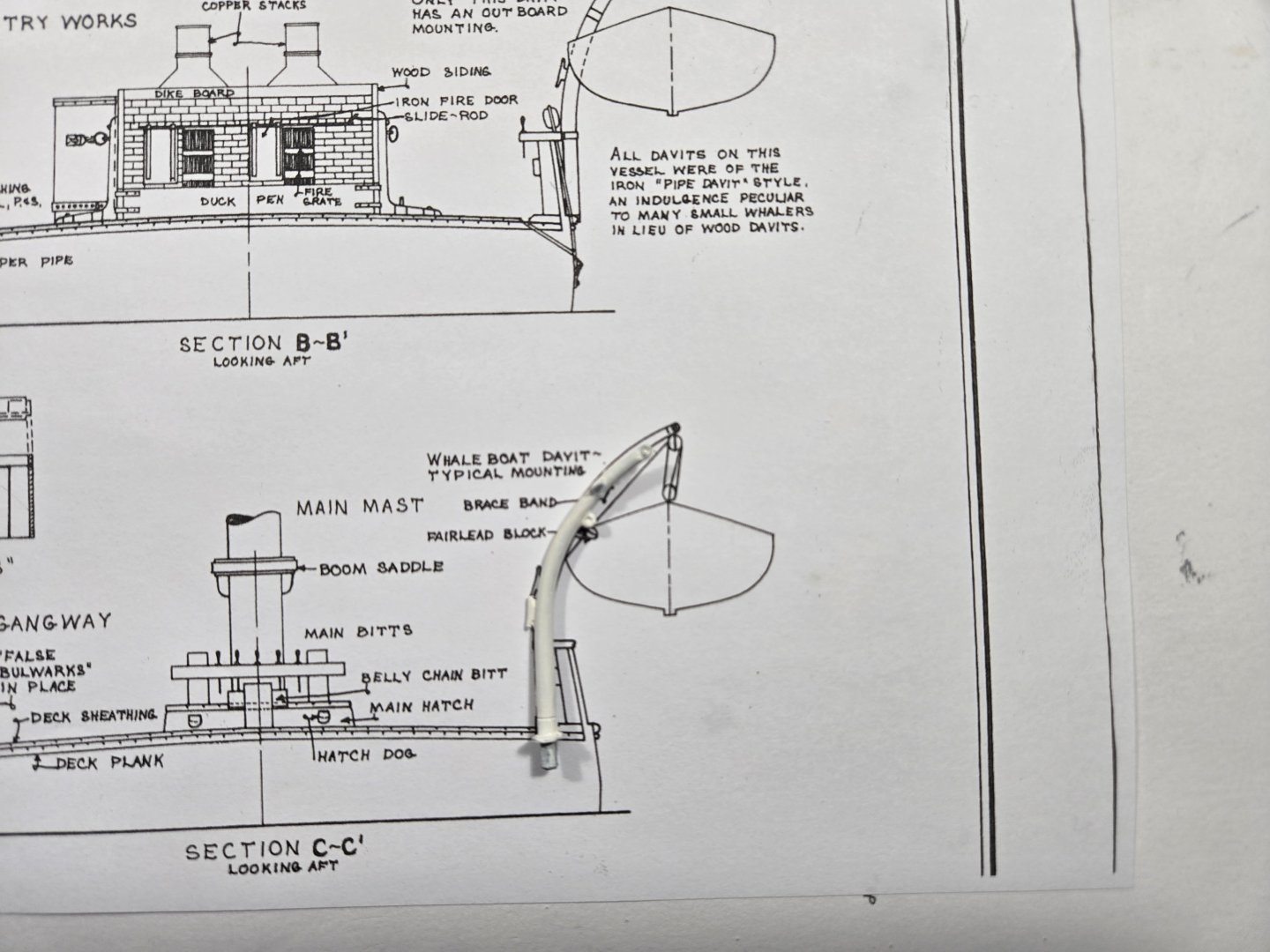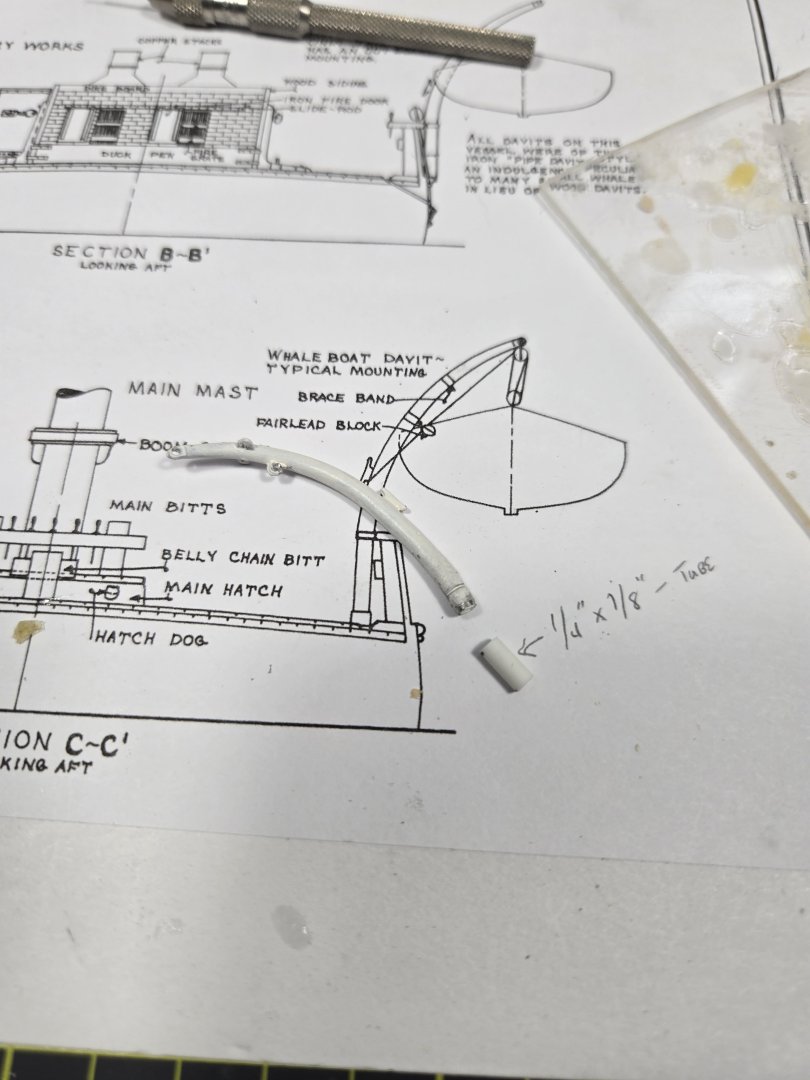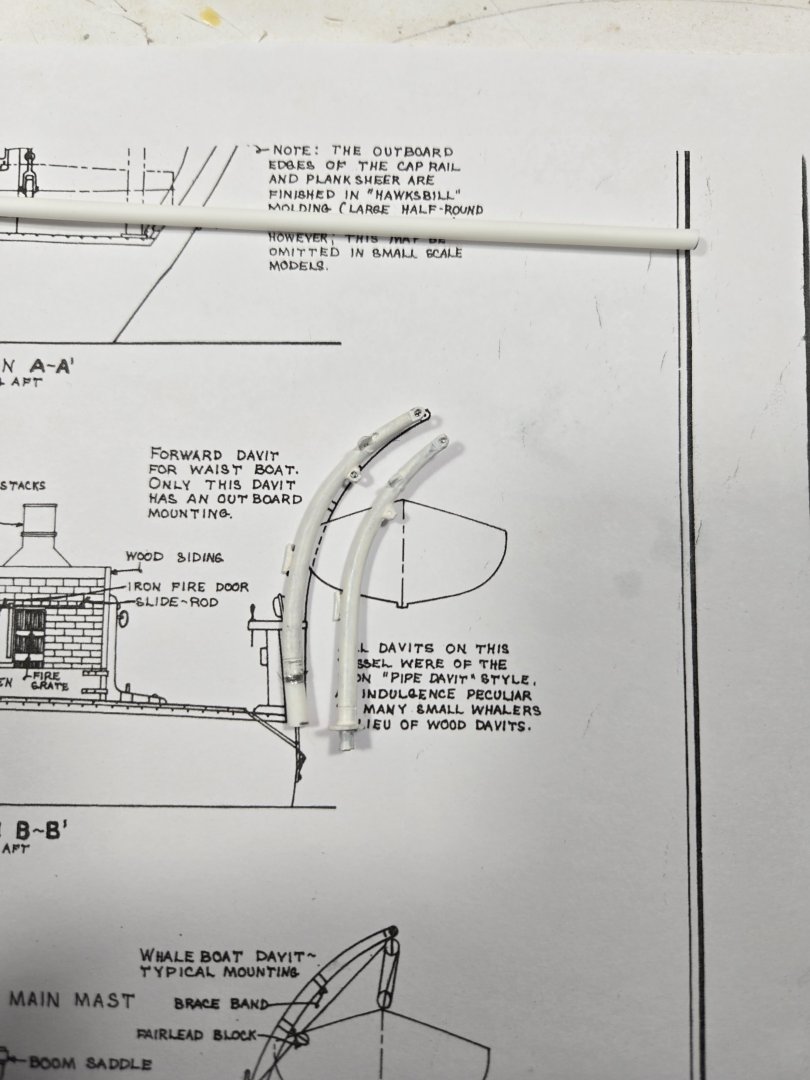-
Posts
155 -
Joined
-
Last visited
Content Type
Profiles
Forums
Gallery
Events
Everything posted by Capt. Kelso
-
I finished this build in April 2025, it was challenging!
- 44 replies
-
- Steam Cutter
- Harriet Lane
-
(and 1 more)
Tagged with:
-
Thanks everyone for the feedback. Chris, actually I never looked at the paint schemes in the instructions and just saw the reference to "red lead". For a build reference I tend to refer to Tom Lauria's build. Tom has been very helpful in answering questions and gave me a paint mix ratio for green used on the bulwarks and deck structures.
- 29 replies
-
Finishing the standing rigging, next step is the ratlines! Not one of my favorite steps. Decided to stage the whaleboats and am really pleased with the alignment. I've decided to add them last, thinking it would be easier to finish the running rigging without working around them. At this stage I plan on methodically going over the build and doing any touchup and cleaning before the ratlines. Fortunately, I already had finished the yards and boom. So, running rigging should move quickly. Will also start working on the display case. I love this build!!!!!!
- 29 replies
-
You might want to search the site for similar builds. Welcome and good luck.
- 5 replies
-
- benjamin w latham
- Model Shipways
-
(and 1 more)
Tagged with:
-

Basswood Strips
Capt. Kelso replied to DGraley's topic in Building, Framing, Planking and plating a ships hull and deck
Where are you located, it will make a big difference on cost. -

question about waxing thread
Capt. Kelso replied to ford34tom@comcast.net's topic in Masting, rigging and sails
Have been using beeswax for rigging the past 40 years with no problems, it hasn't rotted and fallen apart. It was recommended to help preserve the rigging. As for it being acidic, I'm no chemist but I just did a search: Bee's wax is not acidic; it is primarily composed of esters of fatty acids and various long-chain alcohols. This composition means that bee's wax does not contain significantly acidic compounds, making it pH neutral and suitable for various applications, including cosmetics and preservation of artifacts. Wikipedia+2 -

Bullseyes & Lanyard - some help please.
Capt. Kelso replied to Capt. Kelso's topic in Masting, rigging and sails
Thanks everyone for the responses, they have been very helpful! -
The plans for my current build (Kate Cory) note the use of numerous "Bullseyes & Lanyards". Basically, all involving the Bowsprit standing rigging. I have no experience with these although they look easy enough to assemble. The plans are vague and provide little detail, essentially, two bullseyes joined by rope. Searched the internet and my books but can't find any specifics on how these are put together. Is there a standard or rule of thumb distance between the bullseyes? How many times does the rigging/rope loop through the bullseyes? These details, or lack of, drive me nuts! Any help is appreciated.
-
Classic old kit. Nice job! I used to live in Brunswick, miss it!
- 165 replies
-
- Red Jacket
- Marine Model Company
-
(and 2 more)
Tagged with:
-
Slow but steady progress. Finished the log pump and wanted to get as much done as possible on the masts prior setting them. Ready to start the standing rigging.
- 29 replies
-
A little detail not covered in the kit is that Kate Cory used two anchors as noted museum plan. Fortunately, I found two that are a close match on Bluejackets site. Finishing up the bowsprit detail and plan to install the masts this week. Once the main mast is set, I can finish the Log Pump, some clean-up and start the rigging. I found some scrap walnut boards at a local woodworker's shop and made the display base. Hopefully I have enough to make a matching display case.
- 29 replies
-

Drill bit suggestions
Capt. Kelso replied to SiriusVoyager's topic in Modeling tools and Workshop Equipment
Bought these recently on Amazon, they were recommended by another modeler. So far, best set I have had! AM ARROWMAX Twist Mini Micro Drill Bits Set, 0.5mm-2.3mm, Size Marked,Titanium Coated High Speed Steel Jewelry Drill Bits, 3/32-Inch Shank, Hole Drilling Tool for DIY, Wood, Bead, Plastic (HSS Set B) -
Rich, I bought my first airbrush (Paasche) in 1973, primarily for plastic modeling. I've also owned Badger and Iwata. This is a topic which can result in information overload, what type of compressor, tank, tankless, Should I get a dual action, single action, gravity feed airbrush? How do I thin enamel, acrylic paints, etc.. When I started in wooden ship modeling (early 80"s) I was fairly experienced using an airbrush. So, no real learning curve. However, once enamel/lacquer-based paints were being replaced by acrylics, I found using acrylics more difficult to use. Personally, I have found I generally only use the airbrush for painting the hull, especially if there is a waterline involved. I have used it for bulwarks and deck structures simply because I didn't want to bother with a brush. When airbrushing the model, don't "underestimate" the amount of masking required! But, as others have pointed out, particularly with smaller scales, a good set of brushes can work just as well as airbrushing (prefer red sable brushes, still find some Floquil brushes on EBay). In terms of a good basic versatile dual action airbrush for ship modelling, my Badger 150 does the job. I have two compressors, 3gal pancake and dual fan w/tank.
-
Have been finishing detail on the hull and deck. Temporarily set the masts to install the deadeyes, used the kit supplied chain plates which came out better than I expected. Almost finished with the Whaleboat Davits, Cranes and Bearer posts, a number of details still need to be added. Aligning the Davits and setting the Cranes to the correct height turned into a major task! Fortunately, I had finished the whaleboats in advance so I could use them as templates to set the height of the Davits and Cranes. Also, I needed to make sure there was enough clearance for the Davit Blocks. Seemingly endless adjustments! Oh, important point, the forward port davit for the waist whaleboat is on the outside of the bulwark. Regarding the Davit Blocks. Actually, all the blocks. According to the Museum plans Kate used wooden and iron stropped blocks, iron stropped were used as Davit Blocks. OK, I may be a little anal about details at times. But I think they add a nice detail. I trashed all the kit supplied blocks and replaced them with "wood" blocks from Styrene and iron stropped from Bluejacket. I'm pleased with the painting, still needs some touchup. I mixed my own enamel-based paints, scaled down.
- 29 replies
-

The NRG office is back open
Capt. Kelso replied to ferretmary1's topic in NAUTICAL RESEARCH GUILD - News & Information
I feel your pain! No pun intended. Have had both hips done and currently recovering from left knee joint replacement (7/18). Actually, recovery is going well, tossed the cane away! Fortunately, right knee is in good shape. Good luck. -
Haven't posted any updates for a couple of months. Had knee joint replacement surgery which made sitting and concentrating on ship modeling difficult. Gradually getting back into the build. I did manage to finish most of the masts and yards, added the deadeyes and decided to start working on the whale boat stations. Finished the crane, boat guards and bearer posts. Next began working on the Davits and after studying the plans noted the kit supplied davits are out of scale. The plans show the quarter deck davits are approximately 8' tall, while the remaining davits are 10' tall. The quarter deck davits "should be peaked as low as possible to provide clearance for spanker boom", hence they are shorter. The kit davits are 9' and do not match the plan profile. Correcting the profile is fairly easy, the davits are soft metal and can be bent to shape. That leaves four davits to be lengthened. After considering a few options I found a scrape piece of 1/8" polystyrene rod that matched the diameter of the lower portion the davits, applied some 5-minute epoxy and the davit is now close to scale. After I finish correcting and detailing the davits the next step is the true test, mounting them!
- 29 replies
-
Thanks for posting the pic's of your trip. Lot's of good reference detail. Agree, the brass strops look better.
- 23 replies
-
- Speedwell
- battle station
-
(and 1 more)
Tagged with:
-

Iron Stropped Blocks - Kate Cory Whaling Brig
Capt. Kelso replied to Capt. Kelso's topic in Masting, rigging and sails
Thanks Pat. I did search Syren when I ordered some rope stropped blocks but found nothing in the scale I needed. Ordered some from Bluejacket. -
My current build is an old Model Shipways (yellow box) Kate Cory 3/16" whaling brig, built 1856. I have just begun the masts and have been researching rigging. When I bought the kit, I also purchased a set of comprehensive plans developed by Erik Ronnberg from the New Bedford Whaling Museum. The kit plans make no reference to the application of Iron Stropped Blocks whereas the Whaling Museum Plans contain details regarding the use of both rope and iron stropped blocks. I made the decision to stick with historical accuracy and plan to use iron stropped blocks. However, I found only one supplier that sells them. Fortunately, they have the sizes I need and placed my order. It appears the use of iron stropped blocks became fairly common in the 19th Century, yet I find little specific information regarding them and I'm not aware of any manufacturers aside of Bluejacket that includes them in their kits. I thought maybe I could just make my own, unfortunately, I could not find any "how to" posts on any modeling forums. Our hobby in many respects prides itself on detail and accuracy yet I can find almost no information on the application of iron stropped blocks. Am I overthinking this?
About us
Modelshipworld - Advancing Ship Modeling through Research
SSL Secured
Your security is important for us so this Website is SSL-Secured
NRG Mailing Address
Nautical Research Guild
237 South Lincoln Street
Westmont IL, 60559-1917
Model Ship World ® and the MSW logo are Registered Trademarks, and belong to the Nautical Research Guild (United States Patent and Trademark Office: No. 6,929,264 & No. 6,929,274, registered Dec. 20, 2022)
Helpful Links
About the NRG
If you enjoy building ship models that are historically accurate as well as beautiful, then The Nautical Research Guild (NRG) is just right for you.
The Guild is a non-profit educational organization whose mission is to “Advance Ship Modeling Through Research”. We provide support to our members in their efforts to raise the quality of their model ships.
The Nautical Research Guild has published our world-renowned quarterly magazine, The Nautical Research Journal, since 1955. The pages of the Journal are full of articles by accomplished ship modelers who show you how they create those exquisite details on their models, and by maritime historians who show you the correct details to build. The Journal is available in both print and digital editions. Go to the NRG web site (www.thenrg.org) to download a complimentary digital copy of the Journal. The NRG also publishes plan sets, books and compilations of back issues of the Journal and the former Ships in Scale and Model Ship Builder magazines.



